HEADLINES | 6
LIMMUD AZ RETURNS
Day of Jewish learning will feature dozens of topics and legendary actor Ed Asner


Day of Jewish learning will feature dozens of topics and legendary actor Ed Asner


The Greater Phoenix Jewish Film Festival (GPJFF) starts this weekend and the standout feature is expected to be the filmed production of the long-running, one-woman Broadway play “Golda’s Balcony.”
Written by playwright William Gibson, “Golda’s Balcony” follows the story of Israel’s first female prime minister, Golda Meir. The play’s producer, David Fishelson, is bringing new life to the production by releasing a film version of the play with Tovah Feldshuh in the title role. “Golda’s Balcony, The Film” is screening only at film festivals.
The two-week festival starts Sunday, Feb. 10 and runs through Feb. 24.


Fishelson will attend the festival for the opening screening of “Golda’s Balcony, The Film” at Harkins Theatres Shea 14 on Feb. 10. He will present the film and answer audience questions after.
“It’s a strange second life of something that almost wasn’t
SPECIAL SECTION | 13
Design philosophies, DIY tile projects and the advantages of garage-door insulation

After much searching and interviewing, the Jewish Community Relations Council (JCRC) has chosen Paul Rockower as its new executive director.
Starting the position in late January, Rockower succeeds founding executive director Karolyn Benger, who resigned from the post in July 2018.
“Under Paul’s leadership, our local JCRC will strive to inspire, support and convene the Jewish community on key issues such as Israel’s quest for peace and

Serena Knierim, founder of AZ Clinic Defense Force, accepts the National Council of Jewish Women Arizona Section’s (NCJW AZ) Impact Award. Knierim’s group of volunteers escort Planned Parenthood patients past protesters. The award was given during NCJW AZ’s annual luncheon on Feb. 3. The luncheon focused on the legal threats to women’s reproductive rights and health. Read more on Page 5.
 NICK ENQUIST | STAFF WRITER
NICK ENQUIST | STAFF WRITER
Did you know that February is Jewish Disabilities Awareness
JCRC
CONTINUED FROM PAGE 1
security, and to promote a just society in common cause with civic, racial, ethnic and faith-based leaders,” said Congregation Kehillah Rabbi Bonnie Sharfman, a member of the JCRC board.
Rockower said he hopes to be the “glue that holds different Jewish organizations together and be the ambassador to other communities to try to see where we have common cause or issues where we can work together.”
and thriving organization for Jewish connectivity and social good.”

Rockower moved to Phoenix only a week before starting his new position. He is already working hard to expand the organization’s social media efforts. Outreach is Rockower’s current priority.
“I’ve been trying to figure out what people are working on, who to meet with, who to connect with,” Rockower said.
For more information and application materials: (602) 230-7983 www.jewishfreeloan.org

WWW.JEWISHAZ.COM
With more than a decade of public diplomacy experience, Rockower wants to focus on “soft power.”
“Soft power basically means someone’s influence, and it’s a concept I’m going to come back to a lot in my work,” Rockower said. “We in the Jewish community have a lot of soft power; the power of our influence and the examples of our leadership mean a lot to other external groups. I think the view from outside is that we’re a lot stronger and cohesive as a community than sometimes we give ourselves credit for.”
Members of the JCRC board are excited to work with Rockower.
“He brings great talent, experience and passion to our community,” said Erika Neuberg, a member of the JCRC board. “I have no doubt that under his leadership, the JCRC will be a relevant
Rockower has had an eclectic career and has lived or studied in Israel, the Czech Republic, Morocco, Taiwan, India, Argentina, Mexico, France and Colombia. He’s worked in multiple diplomatic positions all over the world.
From 2003 to 2006, Rockower served as press officer for the Consulate General of Israel to the Southwest. He was a visiting fellow at the Taiwan Foundation for Democracy, and a public diplomacy consultant for INDIA Future of Change, a public-private initiative sponsored by the Indian Ministry of External Affairs.
He worked as director of communications for American Voices, a nonprofit that conducts cultural diplomacy in countries in conflict. As part of his role there, Rockower oversaw outreach for American Music Abroad, the U.S. Department of State’s flagship music diplomacy program.
Rockower has also worked as a journalist. Having traveled to more than 80
countries, he wrote a popular column for The Jerusalem Post called “Tales of a Wandering Jew.”
Rockower comes from an influential family. The American Jewish Press Association named its annual journalism awards, the Rockowers, after his greatgrandfather, Simon Rockower. The elder Rockower was a Jewish philanthropist who helped Jewish immigrants get settled in the U.S. in the late 19th century.
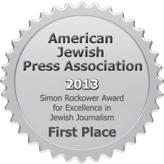

Rockower said his experiences have turned him into a sort of architect of spaces where cultures can come together. Taking this job also allows Rockower to fight anti-Semitism, he said. He was in Morocco when the Charlottesville “Unite the Right” rally occurred in 2017.
“As I was watching the rally, I realized that all my work abroad didn’t matter if things domestically weren’t working,” Rockower said. “I really felt like I wanted to get my hands involved here in America in a community and to try to work toward fighting anti-Semitism.”
So far, Rockower said he has felt very welcome in the Phoenix community.
“I think people really want to see this position function well and be all that it can be in the community,” Rockower said. “It’s only been a short amount of time, but I think it’s been a really great start.” JN
OFFICE HOURS
8 a.m.-5 p.m. Monday-Thursday
8 a.m.-12:30 p.m. Friday
12701 N. Scottsdale Road., Suite 206, Scottsdale, AZ 85254 Phone: 602.870.9470 | Fax: 602.870.0426 | editor@jewishaz.com | advertising@jewishaz.com circulation@jewishaz.com | www.jewishaz.com
PUBLISHER | Jewish Community Foundation of Greater Phoenix EDITORIAL DIRECTOR | Liz Spikol

MANAGING EDITOR | Janet Perez
STAFF WRITER | Nick Enquist
CONTRIBUTORS | Joel Zolondek
ADVERTISING SALES CONSULTANTS | Jodi Lipson
ADVERTISING COORDINATOR | Julie Goggin
PUBLIC NOTICES | Joan Romano
CIRCULATION | Bill Sims
PRODUCTION COORDINATOR | Cheyenne Bass
PUBLISHED EVERY FRIDAY
DEADLINES
EDITORIAL: Noon, Tuesday 9 days prior to publication
ADVERTISING: 11 a.m., Friday 3 days prior to publication
Jaime Roberts, Publisher | 2013-2016
Florence Newmark Eckstein, Publisher | 1981-2013
Cecil Newmark, Publisher | 1961-1981
Pearl Newmark, Editor | 1961-1981
M.B. Goldman, Jr., Founder | 1948-1961
preserved,” Fishelson said. “But I think Meir’s story is very important, so I’m trying to preserve it and hopefully it’ll live forever somewhere on the internet, maybe.”
During one of the play’s performances, Fishelson filmed Feldshuh using four digital cameras placed at different angles. The footage was originally intended to be used by directors who would work on the play. But seeing an opportunity to share the performance with others, he also cut the footage into a 90-minute movie.
“Given that you can cut a movie on your Macintosh, I decided to take all my footage and hire an editor, and I was just stunned by the results,” Fishelson said.
Tony Awards several times. In 2006, actress Valerie Harper starred in a film adaptation of “Golda’s Balcony.”
GPJFF Co-Executive Director Jerry Mittelman said showing “Golda’s Balcony, The Film” at the festival is a great privilege, adding, “where else can you see a Tony-nominated Broadway play for the price of a film?”
But even more important to Mittelman is that the festival “exposes Jewish life to everybody and shows that we, as Jews, go through the same experiences everyone else does.”
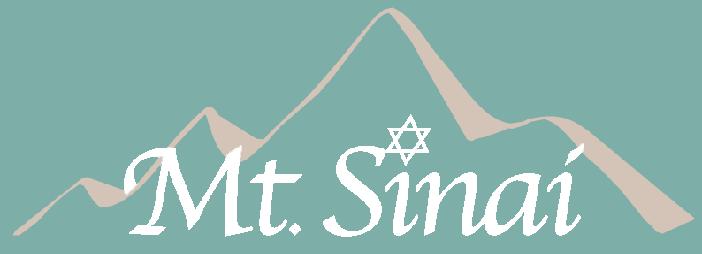

He’s also proud that the festival features great international and art films that
Bureau of Jewish Education.
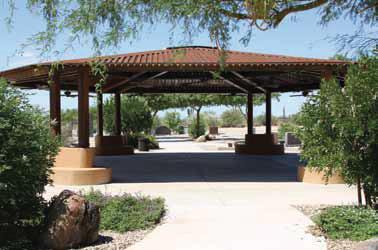
Mittelman, who helped organized the November screenings, said both showings were sold out. He hopes the festival screening will give more people the opportunity to see the film based on the book of the same name.
The movie focuses on Emanuel Ringelblum, who led a covert group of scholars dubbed Oyneg Shabes. The group’s members defied the Nazis while they lived in the Warsaw Ghetto by burying aspects of their culture in tin cans underground.
The documentary’s director, Roberta Grossman, didn’t have the opportunity to interview anyone who lived during that period, so she filmed scenes with actors to recreate the history.
“It takes a lot of time and effort to make any documentary film, and the necessary time, efforts and money for a film on this scale is greatly multiplied,” Grossman said. She said she felt the need to make this movie because so little about the group was known.
Mittelman said that while many of the films screened during the GPJFF are unfamiliar to most moviegoers, other films the festival has shown have been picked up by local Harkins theaters for longer runs.
“It’s a show that was really beloved, but it’s something you can’t see Tovah do anymore. So I decided to submit it to Jewish film festivals and once I did, they started snatching it right up.”
Currently, “Golda’s Balcony, The Film” is only screening at film festivals. Fishelson said that because of Broadway contract issues, it would be very difficult for regular movie theaters to feature the one-woman show.
Feldshuh, who has also co-starred in “The Walking Dead” and “Crazy Ex-Girlfriend,” made her debut as Meir on Broadway in 2003. Both the play and Feldshuh have been nominated for


can’t necessarily be seen in theaters.
Out of the more than 100 films submitted to the GPJFF, 20 were selected for this year. GPJFF’s board already has begun the film selection process for the 2020 festival.
The festival will be hosted at three Harkins theaters in the Valley: Harkins Theatres Shea 14 in Scottsdale, Harkins Theatres Tempe Market Place in Tempe and Harkins Theatres Park West in Peoria.
Another film being featured at the GPJFF is the documentary “Who Will Write Our History?” The film was shown just twice in Phoenix in November as part of a special event hosted by the
For example, the documentary “Bombshell: The Hedy Lamar Story” had a limited run in local theaters after it was screened at the GPJFF last year.
Mittelman suspects that some of this year’s films will stick around after the festival closes.
“I think one of the reasons we’ve persisted for so long is because we get to show all these wonderful films that nobody else gets to see,” Mittelman said. “All the film lovers line up for our festival because they know that we’re always going to have different films they can’t find anywhere else.”
HEADLINES LOCAL
Police continue to investigate who is behind the posting of anti-Semitic flyers near a high school in Mesa.
Last week, authorities where contacted when flyers were found on a light pole and a power box at Crismon Road between Broadway and Southern Avenue near Skyline High School, according to Mesa Police.
Authorities stressed that the flyers were not on school property.
One flyer said, “Love Not Hate,” with a swastika replacing the “o” in the word love and a Star of David replacing the “a” in the word hate.
A second flyer was topped with a large swastika, followed by the words, “Love Your Folk.” The third flyer declared, “You Are Not Alone,” and was accompanied by clip art of a brownshirt raising one arm in the Nazi salute while holding a Nazi flag.
“The use of a swastika, a hate symbol, and a Star of David, a religious symbol, in this context and near a school is deeply offensive and appalling,” said Carlos Galindo-Elvira, regional director of the Anti-Defamation League Arizona. “There can be no place for hate in Arizona’s neighborhoods and communities.”
Mesa Police Department Public Information Officer Nikolas Rasheta said there are no new developments in the case.
The flyers mark the first anti-Semitic incident in Arizona in 2019. The last antiSemitic incident logged for the state by the ADL for 2018 was an act of vandalism at Lake Havasu City’s only synagogue, Temple Beth Sholom. Lake Havasu City Police said exterior light fixtures were ripped out of a side wall, the synagogue’s large front sign was knocked over and a
Star of David mosaic was marred. There are no leads in that case.
During the first 10 days of December 2018, the ADL’s Arizona regional office reported six anti-Semitic incidents across the state.

In Yuma, swastikas and racial slurs were spray-painted on a new outdoor mural. Galindo-Elvira said police in Yuma were investigating the incident as a hate crime.
Around the same time, a swastika and the letters WP, which stand for white power, were
found on a bathroom stall at a movie theater in Surprise. In Scottsdale, a woman found a piece of paper on her doorstep with a swastika on it. AntiSemitic vandalism also occurred at two schools.
According to the ADL, 2017 marked Arizona’s largest single-year increase of anti-Semitic incidents on record. The report listed 26 incidents, including 19 cases of harassment, six incidents of vandalism and one case of assault. JN
Saturday, February 16 | 1 - 5pm
Scottsdale Jewish Community Center 12701 N. Scottsdale Rd, Scottsdale
JOIN US FOR AN INFORMATIVE EVENT AND LEARN ABOUT NEW ITINERARIES AND EXCITING PORTS OF CALL.
P resenting Brands:
The Travel Expo will also include: AmaWaterways™, Apple Vacations®, Crystal® Cruises, ClubMed, Holland America Line, Princess Cruises®, and SilverSea®.

Plus, we will have special booking bonuses from all brands attending, and a grand door prize of a $500 travel gift certificate!*
$3.50 admission - advance price
$5.00 admission - at the door
Pre-register today and save at www.CruiseShow.us
cruiseshipcenters.com/NorthScottsdale

Women’s access to family planning and pregnancy health care formed the theme of the National Council of Jewish Women-Arizona Section’s annual luncheon.
A panel made up of activists and doctors discussed maternal mortality rates, reproductive rights and legislation that is curbing care for women dealing with both planned and unplanned pregnancies.
The United States has the highest maternal mortality rates of any other developed nation. According to the Centers for Disease Control and Prevention, 700 to 900 women die from pregnancy or birth-related causes every year in the U.S.
Panelist Dr. Linda Chambliss, director of fetal medicine at St. Joseph’s Hospital and Medical Center, said the actual number is likely higher, especially among African American women, who die at three to four times the rate of Caucasian women.
While homicide and suicide remain the greatest causes of death among pregnant women, Chambliss and her fellow panelists said natural causes such as hemorrhaging and hypertension are being neglected as laws aimed at curtailing access to contraceptives and abortion leave behind millions of pregnant women looking for health care.
“The laws, the strategy of the antiabortion movement, are not just putting women who would attempt to terminate their pregnancies at risk, they also are punishing women who want to carry to term because everyone is suspect,” said Civia Tamarkin, a Valley filmmaker who directed “Birthright: A War Story,” a 2017 documentary. “What they have done is manipulate and distort and misconstrue laws that are already on the books, like child protection and fetal protection laws, and they again have developed a slew of new laws that they are testing.”
Tamarkin cited the case of a Maryland woman who went into labor after eating a poppy-seed bagel. As a result, the woman tested positive for narcotic use and her baby was taken from her for five days.
“Because of these types of new laws that are coming up, women are not getting the prenatal care they need because they are afraid of being reported to authorities,” Tamarkin continued. “In Iowa, a woman tripped fell down a flight of stairs. When she went to the emergency room to make sure that her fetus was OK, she was reported because the doctors were mandatory child abuse reporters and she was jailed.”
Dr. Julie Baskin Kwatra of Arizona Women’s Care in Scottsdale serves as the legislative chairwoman of the American College of Obstetricians and Gynecologists (ACOG).
As a liaison to the to the Arizona Legislature, Kwatra said she has seen some alarming changes.
“We finally woke up around the late ’90s and early 2000s when we realized the attacks on reproductive health care and the impact on our practice of medicine,” she said. “ACOG has become very politically active They are now a political powerhouse on the national level and also at the state level.”
Kwatra adds her role may be one of the most difficult at ACOG, calling Arizona a “bad laboratory” where national attacks on reproductive rights originate.
“Arizona has the distinction of passing seminal laws that other states are going to copy,” she said, including laws that prevent access to birth control and sexually transmitted disease screening, but also affect how the state’s Department of Health Services writes its policies.
“Some of these laws are going to get to the U.S. Supreme Court. They are not just [going] to affect Arizona women; they’re also [going] to affect every woman in the nation.” JN
YOU’RE INVITED TO ATTEND OUR ANNUAL
FEATURING GUEST SPEAKER
Sharren Haskel
Member of Knesset
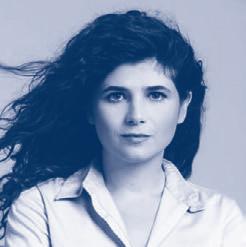
Friday, March 22, 2019
7:30 – 9:00 am
Fairmont Scottsdale Princess
RSVP by March 11, 2019 at jnf.org/AZBreakfast2019

EVENT CHAIRS
Judy Bassett & Dr. Ralph Bassett
Elizabeth Shapiro & David Shapiro
MORE INFORMATION Contact Ashley Iwahashi at aiwahashi@jnf.org or 480.447.8100 x952
 NICK ENQUIST | STAFF WRITER
NICK ENQUIST | STAFF WRITER
Television legend and Emmy Awardwinner Ed Asner will be the keynote speaker at Limmud AZ 2019, taking place on Sunday. Asner’s speech will be titled “Generation to Generation — Promoting Self-Confidence in Differently Abled Individuals.”
to attend this year’s Limmud AZ — and they’ll have a lot to choose from. Each hour of the event will feature approxi mately 12 different presenters.
“Our Phoenix Jewish community is so rich with many programs, synagogues and events,” Walker said. “What was missing was an event that is unaffiliated with any one organization or type of Judaism and allows someone to spend a day learning about their Jewish culture and history and take their Jewish journey one step further.”
That’s exactly what the event's cofounders — Sandy Adler, Rabbi Elana Kanter of the New Shul and Suzanne Swift — wanted for Arizona’s Jewish community after they learned about Limmud in England.
“The goal of Limmud is to equip and inspire all Jews,” said Limmud AZ 2019 volunteer Jacquelyn Null, who is the pro gram and marketing director for Gesher Disability Resources. “With multiple presenters each hour, you can choose to participate in a presentation about Israel, and then do meaningful meditation the next hour if that is the path you choose.”
Asner’s speech marks the first time Limmud AZ, a daylong celebration of Jewish learning, has had a keynote speaker. In the past, guests went directly to one of the dozens of offered classes that interested them. There will be no classes taking place during Asner’s presentation.
This is the fifth year Arizona has held an official Limmud event, which will take place at Arizona State University’s Conference Center at the Memorial Union on the Tempe Campus. There are Limmud events all around the country, each with the core value of expanding Jewish horizons, enabling connections, participation, learning and empowerment.

Limmud began as a movement in 1980 in England. Here in Arizona, Limmud is organized and run by a large group of dedicated volunteers.
Amanda Walker, the event’s facilities manager, expects more than 400 people
This is Null’s first year as a Limmud volunteer. She is part of the publicity/ communications and marketing team.
“Because of the nature of Limmud being strictly volunteer-run, it is important that those who want to get involved share their talents and volunteer to contribute in any way that they see fit,” Null said. “Either in a small way the day of the event or throughout the whole planning process.”
Null got involved because she was looking for a way to volunteer her time and talents in a way that allowed others to acquire knowledge. She said the core values of Limmud aligned with her personal philosophy of helping others find a sense of belonging through learning.
Walker and Null both said there are several different workshops and classes they are excited about, such as one on the Dead Sea Scrolls; a participation class called “Weird Bizarre and Hilarious
Judaism,” designed for attendants to share humorous stories or oddities about Jewish texts; a presentation called “Latin American Jewish Photographers”; and another on “The Rise of the Jewish Gangster.”
But as a fan of “The Mary TylerMoore Show,” a popular and groundbreaking TV program in the ’70s, Walker is most excited to see Ed Asner, who starred as the lovable and irascible Lou Grant, Mary’s boss.
Asner, who was raised in an Orthodox Jewish household in Kansas City, Missouri, will speak to Limmud attendees from his perspective as namesake of the Ed Asner Family Center, which was founded last year. He’ll be joined by his son, Matthew Asner, and his daughter-in law, Navah Paskowitz-Asner, who are cofounders of the Family Center. Though the center is still in the beginning stages of its development, it is gearing up for programming dedicated to enhancing self-esteem in people with special needs. It will offer a variety of mental health
programs and support groups, along with educational courses on topics like resume-building and fine arts.
Asner, who is a longtime activist on a host of issues, from wildlife conservation to Holocaust remembrance, is both a parent and a grandparent of a child with autism. Along with Matt and Navah, he is deeply involved with autism-focused nonprofits such as Autism Speaks.
Gesher Disability Resources will feature Asner and his children at a luncheon the Friday before Limmud AZ on Feb. 8 at the Ina Levine JCC.
After Asner’s keynote address at Limmud AZ, attendees will be able to learn from speakers and lecturers from across the Valley and state, including Sedona and Tucson.
“Bringing together people from various groups is how our community will continue to grow and flourish in the future,” Walker said. “It’s a great place to meet other like-minded people.” JN For more information about the event, please go to limmudaz.org.
Federation reconnects to Israel through Jewish Agency youth program
much encompassed the area between Jerusalem to Tel Aviv.”
Jewish Federation of Greater Phoenix leaders and donors recently received an update on the Jewish Agency’s programs when Jewish Agency Senior Vice President for Israel and Global Philanthropy Mort Naiman visited the Valley.
Based in Minneapolis, Naiman has been with the Jewish Agency for two years.
“We are a very, very large organization with a budget that’s close to $400 million, of which about $100 million comes from Federations in North America alone,” Naiman said. “I thank God the government of Israel picked up a huge portion and gave us about $177 million to $180 million at a time when our partners around the world have decreased their allocations.”
“Federation felt like a space in our heart wasn’t being filled because we no longer had a direct connection to something we could actually reach out and touch in Israel,” said Robin Loeb, chief operating officer for Federation. “We had continued to fund the Jewish Agency and were involved with other projects and programs in Israel in a bigpicture way, but our leadership really made it a priority to connect again in some direct way with people.”Aside from the specific Youth Futures allotment, the Jewish Federation of Greater Phoenix does not dictate how the Jewish Agency should use its donations.
Starting last year, Federation began allocating $50,000 of its larger overall Jewish Agency allotment of $113,500 to the Jewish Agency’s Youth Futures program.
Youth Futures was established in 2006 as a way to help children, young adults, families and communities throughout Israel implement social change.
It is active in 36 locations and 200 schools, sending 300 mentors to serve more than 12,000 students annually from elementary school through junior high. Federation will continue funding the program.
“The location we specifically connected ourselves to was Lod,” Loeb said. “We wanted a location that members of the Phoenix Jewish community could visit even if their trip to Israel only pretty
“One of the things we’re trying to accomplish at Federation is that delicate balance between wanting to have our fingerprints on specific things, but at the same time we still very much believe in the concept of the kupah, the collective pot,” said Federation CEO Marty Haberer. “There is a trust that those dollars are going to be put to use where they are most needed. Sometimes the wisdom of those who are running these organizations has to be trusted because there are things that are needed that aren’t necessarily the shiniest object.”
Naiman and Haberer have been friends for years — a relationship that’s proven to be mutually beneficial for the Jewish Agency and Jewish Federation of Greater Phoenix.
“He has helped me secure Federation annual campaign gifts that have nothing to do with the Jewish Agency,” Haberer said. “He does it because he cares about the greater good of the Jewish community. We’re brothers in arms and there’s nothing I wouldn’t do for him.” JN
There’s TAGER OPTICAL
more.
So, go ahead and make your want-to-do list. But please don’t include a bunch of chores. We’ll take care of most of those for you. We invite you to see all that La Siena has to offer at our upcoming event.

Celebrate the Year of the Pig! Enjoy Chinese themed hors d’oeuvres and refreshments, plus an exciting dance performance. To RSVP, please call602.635.2602.
La Siena 40th Anniversar y Special!
do Save 20% on complete pair of glasses with this coupon offer good thru 31 March 2019 We are... We can... –Not in every shopping center –Often remember your name, –Not on every cor ner & always greet you with a smile –Never part of a large chain of stores –Treat you like family – Not the “biggest, cheapest, or fastest” – Take extra time – Not giving out beepers –Special order just for you –Offer the highest quality, best ser vice, honest, reasonable values & most beautiful selection of eyewear
In his maiden campaign speech last week, former Israeli military chief Benny Gantz made a virtue of being calm. Hewing close to patriotism but steering clear of jingoism, he struck a fuzzy middle course that initially excited enough Israelis to lead talking heads to conclude that Gantz may be a realistic alternative to longtime Prime Minister Benjamin Netanyahu.
Overnight, the polls showed that Gantz and his newly minted Israel Resilience Party would receive 21 to 24 Knesset seats if the election was held today. That projection had Israel Resilience getting eight more seats than what previous polls predicted. Meanwhile, Netanyahu’s Likud is polling pretty steadily at around 30 seats — still the biggest vote-getter, but only about half of what’s needed for a majority.
“Momentum. That’s the magic word,” Yossi Verter wrote in Haaretz. “That’s what Gantz brought to a despondent, depressed, disappointed electorate that was preparing for more bitter frustration on April 9. Suddenly, there’s a chance. All of a sudden, the situation doesn’t look terminal.” So, it appears that Gantz’s pitch is being viewed as a message of hope.
“There is nothing more precious in the world to me than the state of Israel,” Gantz, 59, declared. “For me, Israel really is before all. We are one nation. We share one flag, one anthem and one army.”
The problem with that declaration is that it told the Israeli electorate, and Israel-watchers abroad, absolutely nothing. Instead, it was the equivalent of Mom, a plate of hummus and hot pita. Although Gantz did stress his security credentials — which are his strongest card against “Mr. Security” Netanyahu — the fact remains that Gantz and his political record are pretty much a blank slate.
We do, however, see some indication from Gantz’s choice of election partners that he may be working to combat the charge that he’s a lefty. To that end, he’s brought on several former rightward-leaning Netanyahu associates, most notably, former Defense Minister Moshe Ya’alon. Ya’alon, another former general, is a proponent of West Bank settlements and has called for bringing “a million settlers to Judea and Samaria.” On the other hand, one of Gantz’s campaign videos seemed to suggest that he is willing to compromise with the Palestinians. Which is it? We don’t really know. Uncertainty is the curse of a blank slate.
All Israeli governments and most of the country’s political parties have been built through the coalition process. Coalition relationships have a built-in tension that most, except for extremists and purists, can live with — at least for a while. Perhaps Gantz is trying to build a center-right coalition focused on security and not West Bank settlement. That could go a long way in taking the wind out of Netanyahu’s sails and provide Israel with a working center.
If not, Netanyahu will almost certainly sail to reelection. Which, given the history of coalitions, would not preclude Gantz and Israel Resilience from joining a new Netanyahu government. JN
Letters must be 200 words or less and include the writer’s full name, address and phone number or email address. Letters are edited for content, style and space. Send your letters to Editor, Jewish News, 12701 N. Scottsdale Road., Suite 206, Scottsdale, AZ 85254; email letters@ jewishaz.com.
Many in our community view North American universities as bastions of anti-Semitism. They point to the strength of the boycott, divestment and sanctions (BDS) movement on college campuses and the groups (including Jewish ones) who support it, such as Jewish Voice for Peace and IfNotNow, as indicative of a vehemence against the Jewish state that is rooted in anti-Semitism.
That view may be correct. But a new voice in the debate — a solidly pro-Israel student from Stanford University, one of the campus hotspots in the BDS effort — is turning conventional wisdom on its head.
“Why do my peers oppose Israel?” sophomore and Jewish Student Association board member Benjamin Simon wrote in a new Wall Street Journal online opinion feature called “Future View.” “Not because college students are anti-Semitic, but because most hold one truth to be selfevident: Powerlessness implies moral legitimacy. The Israelis are powerful; the Palestinians
are not. As such, the IsraeliPalestinian conflict is merely a struggle between victim and oppressor, and nobody wants to support the oppressor.”
To be sure, Simon’s view is not a new one. It’s a derivative of the David and Goliath pro-Israel narrative that was prevalent in the pre-1967 era. That support lost ground to pro-Palestinian activists as Israel gained in military might and economic progress. But, according to Simon, “campus pro-Israel groups [still] try to portray Israel as a victim — a victim of international bias and unprovoked aggression from its Arab neighbors.” Simon questions the effectiveness of that narrative, since even though Israel may be under threat, it isn’t powerless. Instead, he suggests that proIsrael advocates make the point that “power doesn’t automatically imply moral turpitude; and conversely, powerlessness does not guarantee goodness.”
Simon argues that proIsrael advocates should accept the obvious fact that Israel

is powerful, and then work to change the framing of the debate over morality and legitimacy. Israel can be powerful and still strive for the protection of human rights, the development of justice and the achievement of peace. We inherently know this, of course, but according to Simon, there aren’t too many us making that kind of a pitch when facing off against groups such as JVP, IfNotNow and Students for Justice in Palestine.
The takeaway from Simon’s piece is that pro-Israel advocates need to understand and work through issues relating to the reality of the Israel-Palestinian power dynamic as they advocate for a safe, secure and sovereign Jewish state. That’s probably a good idea. And it is probably also a good idea to recognize that given the complexity of the arguments and the changed dynamics of power on the ground, just because someone doesn’t buy the pro-Israel argument doesn’t mean that person is an anti-Semite. JN
In Phoenix, indeed nationally, the Jewish and Muslim populations are not known for their closeness. Most often, geopolitical events and a mutual suspicion are at the root of this condition. As humble figures only looking to build and heal the rifts within our communities, it is significant that we partner now to foster more understanding, more harmony and better relations. No matter the difficulty, we must create opportunities for the Jewish and Muslim communities to partner with each other and become allies. This has been put to the test here in Phoenix, especially in regard to building a sustainable path toward reconciliation and increased understanding between these two great religious traditions.
We live in a precarious age where at every turn, it seems that discontent and uncertainty around the world have turned their wrathful eyes toward minorities and communities that are often seen as “the other.” With all of the international turmoil over the past few years, it’s easy to think that there’s no chance for bridge-building anymore. The refugee crisis in Europe, the rise of anti-Semitism and Islamophobia, and the
radical polarization of political ideologies can leave us all feeling hopeless. Though these feelings of division are seemingly more pervasive, we have seen that the opposite is also true. Listening, respect, mutual understanding and empathetic connection; these associations thrive even when put to the test. We created an opportunity for young Jewish and Muslim professionals to meet regularly and engage in dialogue. We have been doing this through the most ancient of traditions: talking and sharing a meal together. In the Jewish and Muslim traditions, the model of Prophet Abraham comes to mind, for in one of the stories of the Bible, as well as the Quran, Abraham opened his home to three strangers who turned out to be emissaries of God. So too, from this lesson, we learn the value of radical empathy for the stranger and the other.
Rather than being a one-off event, our young professional dialogue sessions in mosques and synagogues for Jews and Muslims here in the Valley have sparked an exciting renaissance for those seeking substantive meaning in young professional programming. Over the last two years, we have met at least six times to discuss
SARA STOCK MAYO
Ihad the honor of speaking last month at Pittsburgh’s Women’s March. While the national leadership was under intense scrutiny, many felt it important that the local march embraced two Jewish speakers: Rebecca Glickman, a 17-yearold who mentioned the names of every victim of the Tree of Life shooting, and myself, a liberal Zionist who stated this as part of my identity in my remarks.
Not everyone in the Jewish community understood my decision to speak, but through many conversations with people who have varied beliefs, I felt encouraged to share my experiences being a progressive activist during a time of increasing divisiveness in our country. We are divided in our beliefs, but even more divided by our inability to engage with others who feel differently.
topics ranging from Chanukah and hajj to racism and death. We have seen firsthand how the engagement between Arizona’s Jewish and Muslim communities has developed and flourished through our meetings. The venue and program of one of our meetings was changed last October so Muslims could stand with and support our Jewish neighbors after the synagogue shooting in Pittsburgh. Coalition-building, and simply being present for one another, is part and parcel of our interfaith work.
We are not naïve and don’t imagine that this is the way to solving all the problems and issues that surround our communities in one go. What we do know, however, is we had to start somewhere. In fact, through developing meetings centered on friendly dialogue, food and friendship, we have created a fruitful atmosphere where we call out hate while also breaking down the walls of preconceived notions about each other’s communities
These two communities have no lack of tension with one another globally, and ideologues seek to divide them further based on that. What a powerful message it sends for those committed to pluralism and acceptance that the Jewish
and Muslim communities come together to serve as role models for the notion that religious freedom is deserved by all. It is precisely at a time when freedoms are being challenged that we must safeguard these liberties for all people. Now is the time to defend those under attack. We must do it for ourselves, for the sake of others and to honor our core religious and cultural values. For us, these words ring true and they ring loud. The diversity for which this nation is celebrated is worth defending and preserving for future generations. With the most modest of actions, there is hope for not only a renewal in relations between great religious traditions, but a more enlightened discourse for our community at large.
Local young professionals interested in being part of the movement toward reconciliation and connection, please join us on Tuesday, March 12 at Congregation Or Tzion for the next installment of our Jewish-Muslim dialogue. We hope you can make it! JN
Throughout my various experiences of working in the Jewish community, I have strived for balance and nuance, which these days are harder to come by.
A lot has been said lately about anti-Semitism and anti-Zionism (both separately and intertwined) in leftist activist movements. It needs to be addressed, no doubt. It is difficult to navigate complicated narratives and
relationships within movements, and many find their backs against a wall when trying to formulate opinions on whether to stay or to leave.
For anyone who considers themselves left of center, there is a deep feeling of loss when having to confront this. When one’s passions, ideals and pursuit of justice align with other like-minded
SEE ZIONIST, PAGE 10
One of my students recently asked me, “You always say God is everywhere, but sometimes I find it hard to see. How do you see God in everything?” I have been thinking about this question a lot, especially since we read in this week’s Torah portion, “And let them make for Me a sanctuary that I may dwell among them” (Exodus 25:8).
Why did the Israelites even need a sanctuary in the first place? Was it hard for the Israelites to see God everywhere?
After all, they had just witnessed the miracles and wonders of the 10 plagues and the crossing of the Reed Sea. What other physical evidence did they need?
Luckily, this question has troubled thoughtful people of all religions for many centuries. It is the kind of question that people usually answer by writing a book, not answer on one foot, caught off-guard. But here, in a nutshell, is my more thoughtful answer:
It’s true that Jewish tradition teaches

that God is in everything, that God’s presence pervades the universe — that there is nothing, in fact, that is not God. Yes, that means God is in something as mundane as a vacuum cleaner or as painful as the loss of a childhood pet or arguments between parents and children.
I do believe that God is evident in the beauty, order, elegance and coherence of the natural world. It is easy to feel a sense of awe when you see one of those spectacular Phoenix sunsets or stand at the rim of the Grand Canyon. What is hard is to see God in things that are ordinary or ugly or evil!
Here is where I, and some contemporary theologians, differ with our tradition. Instead of beginning with the
assumption that God pervades all reality, I ask myself: Where is God in this situation? Sometimes the answer is clear to me. The vacuum cleaner is fashioned by human beings using their God-given gift of intelligence to do something useful in the world. God is not the one who made the machine, but God is the one who implants a spark of curiosity in the human mind, and the drive to create and figure things out and make things better. What about when our pet dies? Where is God in that situation? God is present in the process of personal grieving, when we remember the positive memories of snuggling with our pets. And God is present when we choose to love again and continue to go on with our lives.
I believe, as well, that God is present when we as parents and children fight. Even though we may disagree from time to time, and say things that are hurtful and we don’t mean it, God’s love is found in the reconciliation process —
when we say we are sorry. God’s love is conveyed in the unconditional love between parents and children; the sort of love that is impenetrable to anger and hurtful words.
Human beings, says a Chasidic teaching, are the language of God. God communicates through us; God acts through us; God comes into the world through our actions. So if we are there, doing our best to be there for each other and do justice and create beauty and make peace, then God is there. And the opposite is also true. If a situation is empty of human care and concern, then as far as I am concerned, God is absent as well.
So in the end, it all depends on us. JN
groups, it is understandable to feel betrayed by the very people who claim to have provided “safe spaces” where your voice has been valued in the past.
It is important to recognize that everyone’s lived experience and pain must be seen and acknowledged. Perhaps the larger question is how we choose to move through the pain and create opportunities for growth and reconciliation. There is no one right way to engage in difficult conversations. We all must lead with good intentions and try to assume the best intentions of others, while we build relationships grounded in trust.
And yet, there is an understandable amount of mistrust amongst progressive Zionists, and herein lies the greatest tension. While many Jews on the “new left” consider themselves anti-Zionist, there are those of us who remain steadfast in embracing Israel as our
national Jewish identity. We would like to be able to be “both/and” rather than “either/or,” but as the United States becomes more polarized on both the right and the left, we are often put in positions of choosing a side that doesn’t allow for expression of our full identity. Some of us choose to remain in these spaces and call out anti-Semitism
of these things fall under the category of white nationalism, the biggest threat to all marginalized groups. While anti-Semitism is a very real issue on the left, there is a false equivalency when comparing this to anti-Semitism on the right. Rhetoric on the left is triggering and unacceptable, but the actions of those who fall under the umbrella of white nationalism seek to destroy us entirely.
through boycott and the desire to wipe Israel from the map. Protest is valid and oftentimes warranted — eliminating the state of Israel is not.
when we see it, but this has become a cumbersome and lonely task.
It is essential to dismantle all systems of oppression, ranging from white supremacy to discrimination against LGBTQ communities, to sexism, Islamaophobia and anti-Semitism. All
People on the left need to be educated to use the term “Zionism” in the correct context and not as code for racism, apartheid and slavery, as it is often referred to in progressive spaces. Progressive Zionists see criticism of Israel’s ongoing occupation as a moral imperative. And yet, we will not descend into the anti-Israel hate speech and one sided-narrative being spun by the boycott, divestment and sanctions (BDS) movement. Some of us even consider BDS as a valid form of nonviolent protest and are able to see the fine line between economic pressure
So where do we go from here? How do we stay in dialogue with the progressive left? How can we be both activists and bridge builders? While I don’t have answers, I know that I am not willing to give up hope. Silence in the face of injustice is never an option, but we cannot allow others to define the entire agenda.
This is complex, messy and painful work, and mine is certainly only one perspective, but it is my way forward. I welcome dialogue with anyone willing to come to the table who cares to listen deeply, show respect and concern, and be open to growth in committed dialogue which is only borne of real relationships. JN

On a recent trip to Argentina, I had the good fortune to visit Mishiguene. The restaurant’s philosophy is based on the fact that Jews have established roots all over the world and had to adapt ancestral recipes to locally available ingredients. The menu of Mishiguene reflects that tradition, offering dishes ranging from Russian borscht and Moroccan lamb tagine to New York deli and Roman artichokes.
Located in the trendy Palermo neighborhood, Mishiguene is the brainchild of Executive Chef Tomas Kalika and CEO Javier Ickowicz. Kalika hails from Jerusalem while Ickowicz is a Buenos Aires native. Together, they have created what they call “the first avant garde Jewish restaurant.”
We were greeted warmly with the soundtrack of klezmer music. Our server
spoke excellent English and made a great recommendation for a Mendozan malbec. Then the “Jewish bread selection” arrived: a bagel, a slice of challah and a pita, accompanied by a jar of pickles, a puree of oniony schmaltz and a bottle of locally pressed olive oil.
For starters, we chose the boreka, a savory pastry filled with goat cheese and topped with sesame seeds, greens and a poached egg. We also ordered the baba ghanoush, which was a
Content devoted to FAMILY MATTERS publishes every third Friday of the month

Family Matters is devoted to each stage of Jewish family life. Topics will include parenting advice, education, family health, Jewish identity, household finances and much more.


Advertise in Jewish News and watch your business grow. Reach this affluent, educated and family-oriented audience with your smart, targeted advertising program
Call your advertising sales consultant today. 602-870-9470 ext. 4. or advertising@jewishaz.com
deconstructed version of the Middle Eastern dip; charred eggplants formed a bed for a puree of well-seasoned eggplant, tahini, fresh parsley, dill and olive.
For our main, we split the “pastron,” a brick-sized slab of pastrami, served on a latke and topped with an egg. The preparation of the pastron, if my translation is correct, involved a sous vide — a vacuum seal of the food, which is then cooked in a precisely controlled water bath.
The good news was the resulting tender, well-flavored uniform hunk of pastrami. For purists, however, the results were a bit too tender; pastrami should bring a bit of welcome meaty chewiness. Mishiguene’s version was so soft that it had a hint of the texture of pate. The latke, however, was perfect.
For dessert, we tried the baklava, which arrived as cigarette rolls of pastry, nuts and honey atop a bed of sweetened cream cheese and garnished with vanilla ice cream. The “huerta de Katy” offered a mélange of seasonal, local fruits on a bed of chocolate, with a scoop of raspberry ice cream, leaves of pastry and a few mint leaves. JN
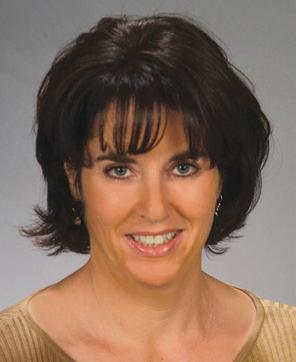
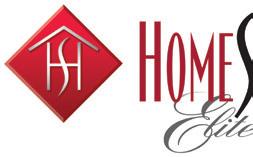
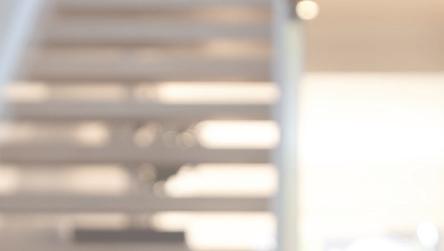
Steven Jay Rubin was shaving one morning when he started wondering about Anne Frank’s cat.
Rubin, an L.A.-based film producer and author, often listens to movies while he’s shaving, and on this particular morning several years ago he was listening to 1959’s “Diary of Anne Frank.”

“There’s this one scene where Anne and Peter are chasing Mouschi around the attic, and it just dawned on me in that moment, ‘What did the cat think of all this craziness?’ ”
Rubin reached out to friend and collaborator David Lee Miller, a writer and director also in L.A. “I called David up and I said, ‘What do you think of telling the Anne Frank story from the point of view of the cat?’ And it just lit a fire under David.”
The result is the new children’s book, “The Cat Who Lived With Anne Frank,” illustrated by Elizabeth Baddeley. The book, co-written by Rubin and Miller, begins with a boy named Peter carrying a cat in his coat as he walks along the streets of Amsterdam. In Baddeley’s luminous illustrations, we see the redroofed buildings along the canals, the redand-black Nazi flags, and bicycles parked next to signs saying “Jews forbidden” in Dutch.
Meanwhile, the evocative narration comes from Mouschi, hidden in the coat: “I breathe between the buttons. I smell the sea, the herring, the tulips. I hear
my boy’s shoes clacking cobblestones.”
Mouschi is taken to a secret residence where he meets the “Yellow Stars,” as he calls the Jewish people, who are hiding from the “Black Spiders,” his term for the Nazis. There, he finds a “a sparkling, brown-eyed, dark-haired girl.” That girl is Anne Frank.

The co-authors typically work out of Miller’s home studio. In the past, Miller — who has four cats — had to keep the room fastidiously clean, as Rubin was allergic to cats. But Rubin’s allergy disappeared in the course of writing this book. In fact, one of Miller’s cats, Pau Pow, served as a particular influence.
“He is very Mouschi-like in the sense

that he’s extremely intelligent and understands everything. He actually walks through the park, so we would take breaks and watch Pau Pow move through the park and that would be inspirational.”

Miller’s other cats were frequently in the room, too, stretching across the desk. Such exposure was helpful because Rubin really wanted to get inside the cat’s head.
“Since the cat’s telling the story,” he said, “it was very important for the level of imagery, sounds and physicalities that the cat experiences to be exponentially increased. For instance, the fact that he’s in Peter’s coat and he can hear the puttputt of the canal barges — we wanted to make it a visceral experience. What would a cat be sensing when he’s held in a hot jacket or sweater, crossing the streets of Amsterdam?”
Rubin and Miller both visited Amsterdam while working on the project, as did Missouri-based Baddeley, whose own black cat served as the model for Mouschi.
“Usually, when kids are at picture-book level, they haven’t learned about the

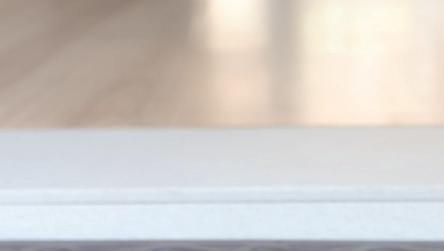


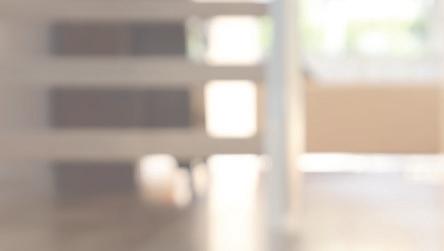






Holocaust,” she said. “I thought it was interesting to do from cat’s perspective. People were stuck inside this space but the cat could kind of come and go.”
Both men were “blown away,” they said, by Baddeley’s rendering of their story. Rubin said, “We were very concerned that Anne look right. We’ve seen various illustrated books where Anne, for lack of a better term, sometimes comes off as kind of frumpy looking. We just wanted her to be a normal teenage girl, and Elizabeth hit it out of the park.”
Advance response to the book, out this week from Philomel Books, has been glowing. The Museum of Tolerance in L.A. featured it on International Holocaust Remembrance Day.
“We have a mission of educating a new generation of young people and families about the lessons of the Holocaust and Anne Frank and how important it is, in this age of emboldened hate, to confront racism and intolerance and bullying,” Miller said.
Drawing children in with an adorable cat may help spread the word. And as sad as the subject matter is, the book is uplifting.
“I know the comfort and humanity you can get from having a pet,” Baddeley said. “Knowing that she had this animal there — I don’t know if it gave her hope, but as the reader, it gave me hope.” JN
Maybe you’ve done successful DIY projects before, and you’ve always yearned to try laying tile. Probably you have several places in your home where you’d love to pull up the worn-out carpeting and lay tile instead.
Perhaps your bathroom tile is cracked and out-of-date. Maybe you’d like to put tile on top of your concrete patio or is that even possible? Tile backsplashes, tile trim in the swimming pool — all that seems appealing. These days hundreds of types of tiles are for sale: ceramic, porcelain, Saltillo, stone and more. You can handle all that, right?
We asked Joe Fortuna, owner of Mexican Tile and Stone in Phoenix and Tucson, for his suggestions on starter projects and for tips on making jobs go smoothly. First, he urged a word of caution for do-ityourselfers: Remember that the method of installation depends on the kinds of tiles to be laid and the conditions of the floor or walls they are adding tile to.
With all projects below, be sure to get the specs from the tile company before starting work.
Tile floor
Start small, not big.
“If you want to try doing a floor, a small bathroom, powder room or closet, maybe about 40 square feet would be a good size, or even the area under a roll-out refrigerator,” Fortuna said.
He also recommended studying similar projects online and measuring twice and cutting once. What follows is a general outline for how to lay tile on floors. But every situation will be slightly different.
• To lay tile on a concrete slab, the area must be clean and flat. Before installation, any old tile on the floor must be removed, as well as leftover adhesive on concrete. Cover any floor cracks with the appropriate crack isolation membrane; fill in any divots.
• Next the thin-set (an adhesive) is put down and tiles are laid. During this process, movement joints (small, un-grouted gaps) should be installed all around the perimeter of the tile floor and every 20 to 25 feet of flooring on the interior and 8 to
temperature of the concrete changes as the seasons change. Ask your supply house for color-matching caulking for movement joints.
• Then the thin-set must dry thoroughly. During the several hours or more of drying time, no one should walk on the surface. It goes more quickly in hot, dry weather and longer during colder weather.
• With some types of tile, such as natural stone, some porcelain and marble, pre-sealing may be needed. If not done, “picture framing” can take place when the grout is applied. “Picture framing” means moisture from the grout or thin-set seeps into the tile to make an ugly border on each tile.
• Finally, grout is applied, and the surface of the tile is wiped clean. This may require several wipe downs to remove all of the grout residue from the surface of the tile.
It’s easy to install tile on a cleaned-up, painted wall surface behind counters, sinks and ranges in your kitchen. First, remove any wallpaper. Then sand the surface and clean up dust. Easiest to work with are mesh-backed sheets of mosaic glass or ceramic tiles. Measure your space to estimate how many sheets to buy.
When you get the tiles home, measure
again. Then, use a large piece of cardboard laid on the kitchen floor with masking tape to outline the size and shape of the wall you are covering. Lay down the mesh sheets of tiles to see how they will fit the space outlined on the cardboard. In some cases, you must fill odd gaps with partial sheets or extra tiles. Arrange the extra tiles so they end up in an area where they are less visible. Use a tile saw or carbide nipper if you must cut tiles to make them fit. Use spacers between sheets to keep the joints of equal size. The trickiest part of this job is smoothly applying a layer of thin-set on the wall; then setting the tiles on top of it. If any tiles are slightly concave, you might have to apply more thin-set to the back of the tile. You’ll need a wide array of tools, including a level, tape measure, notched putty knife, grout application trowel and sponges. Five-gallon buckets will come in handy, too.
Tile trim
A fire pit, fireplace, a bench, or a wall in an outdoor kitchen are all great areas for a DIY tile project. Talavera Mexicanstyle tiles or Saltillo tiles can add colorful accents outdoors. These tiles can be laid on stucco, provided that the stucco is in very good shape. Inspect the stucco and apply membrane to any cracks in the wall. You can get the membrane from your supply house. The tiles should also have proper sealing by the manufacturer and have weather-proofing and UV
protection. The application process for tile on stucco works very similar to how you would add backsplash in a normal kitchen wall.
Bathroom tile
If you are installing tile flooring in your bathroom, you would follow the same process for laying a tile floor as described above. Although Fortuna agreed homeowners can lay tile in a small bathroom as a starter project, he discouraged them from tiling showers.
“It’s too hard for a beginner to work on a shower because of difficulties with drains and water-proofing,” he said. “And you never want to have a do-it-yourself shower project in a bathroom on the second story.”
Swimming pool tile
Setting new tiles along the water line in a swimming pool will work best in a pool with a pebble-tech finish, Fortuna said. It can be more difficult in plaster pools and you won’t want to try it in fiberglass pools. Before the job, you have to lower the water surface, and you may have to chisel off old tiles. For best results, contact a certified professional.
Tools you may need for your tile job:
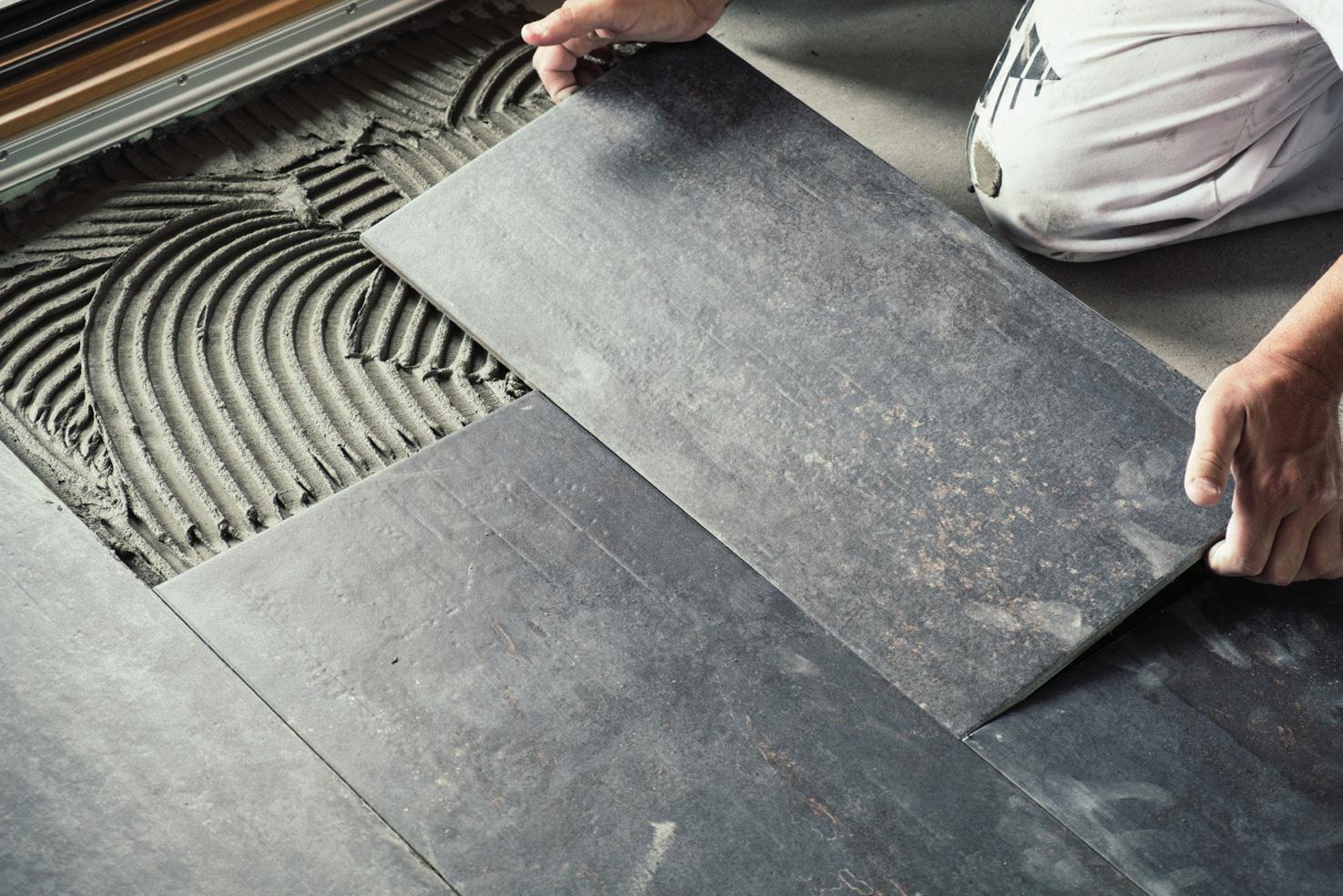
• Pencil
• Tape measure
• Level
• Speed square
• Grout application trowel
• Rubber float to help spread grout
• Grout sponge
• Tile spacers
• Notched putty knife
• Power drill
• Mixing paddle
• 5-gallon buckets
• Kneepads
• Safety glasses and earplugs
• Scoring cutter or wet saw
• Handsaw or jamb power saw
• A hand-held grout saw JN

Jewish News is now accepting nominations from our readers for Best of Jewish Phoenix: Home & Design, to be published May 2019.
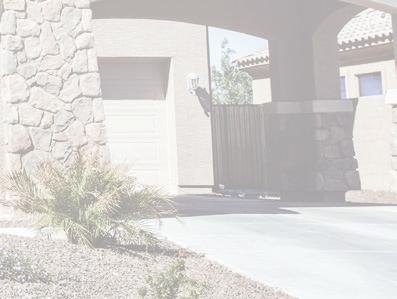
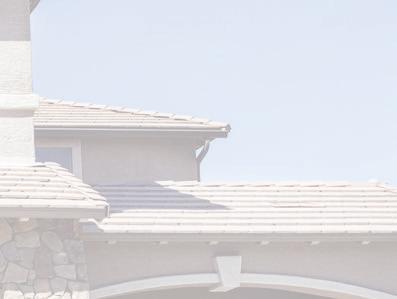
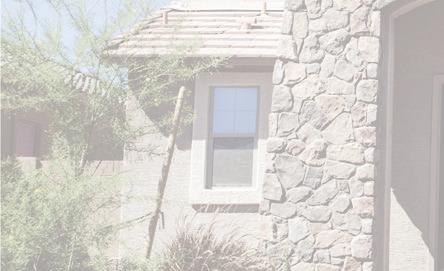




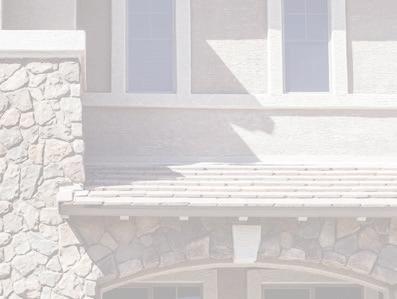


 BARBARA KAPLAN | CONTRIBUTING WRITER
BARBARA KAPLAN | CONTRIBUTING WRITER
Feng shui and the Bajaro Method can be joined to create the perfect combination for harmonizing the environment in which we live and work.


For many people today, home and work are the same, which makes it even more important to understand these two philosophies. Together, they are the most powerful method of creating harmony in personal environments for happiness, good health, productivity and success.
These two techniques used together are believed to bring about personal connection and healing of the mind, body and spirit. This happens because we are all reacting to our surroundings, whether we are aware of it or not. We are all either healing or hurting all day long. This is influenced by the experience of our senses and, of course, the energy around us.
What is feng shui? This Chinese philosophy simply means “wind” and “water,” which is natural to any environment. Whether the energy is clear or blocked will affect the flow of chi, which is the word used for the healthy or unhealthy energy flow in a space. For example, changing the position of a desk in relation to the door can promote a better flow of energy that can result in being less distracted or stressed.
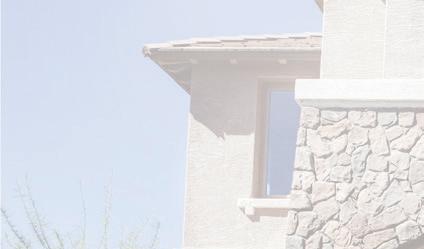
thing you see in the morning? How does it make you feel? What is the last thing you see at night? How well do you sleep? What is the energy when you walk into your workspace?
It becomes more difficult when you are out in public spaces, but learning the cues that affect you becomes critical. For instance, when in a restaurant, do you carefully select the seat where you will be eating so that you are comfortable, looking in the direction that pleases you, not hearing loud conversation from a nearby table or other distractions?


The key difference of the two philosophies is that feng shui is about the space and Bajaro is about people in the space.
Feng shui focuses on aligning spaces and objects to facilitate the free flow of positive energies and remove the negativity in the environment. Positive energies move freely in your spaces to bring people good health, happiness, sound relationships and prosperity. Negative energy is stagnant, like from clutter and wrong placement or size of furniture. Once the space is clear, there is room for people to live and thrive there.
Feng shui also focuses on all kinds of materials in the room, such as rubber, synthetic fabrics, wood, stone, brick, earth and so on, as they either obstruct or assist free flow of good energy around your home and workplace. It is important to know that there are remedies for all situations to create better chi.
Bajaro has three elements: understanding, acceptance and allowing, which create an awareness of discomforts in our environment as well as the things that make us feel good. With this awareness, we are then able to adjust. By turning inward, which I call the ultimate “interior” design, we can heal in our harmonized environment.
We must consider the complete experience we have every day. What is the first
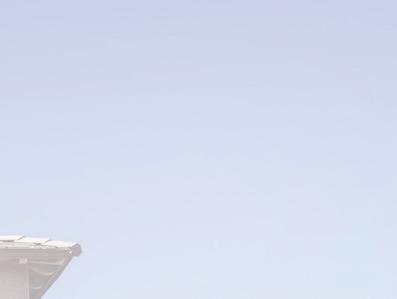
Bajaro addresses the individual and empowers them to create the spaces in a personal way to express their desires, be comfortable and enjoy living with what they feel is beautiful. Bajaro believes, “If it feels right, it is right.” Bajaro encourages people to have confidence in their taste and style. Bajaro asks the right questions so each person is able to find the right answer for what they need and how they want to fulfill their lives. For example, what color feels soothing in a space meant for relaxation or what color inspires you in an area used for a creative process?
When you have both the positive energy and personal understanding working together, you have perfection.
Agarage can serve so many purposes for homeowners. It isn’t just a place to park your car. It can be a workshop, gym, bedroom or entertaining space. All these options make your garage one of the most versatile spaces in your home.
However, if you are going to use your garage for anything besides parking your car, you are going to need to insulate your garage door. An insulated garage door can make your garage a warmer, cooler and quieter place.
Here are the reasons you should insulate, as well as some thoughts on what types of insulation are best suited to youu home.
Homeowners tend to think that reducing your energy bill means changing lights, adding new water faucets or installing a more energy-efficient AC unit. But insulating your garage door is a move that can cut the energy costs for your entire house.
Most garages are not built to be living spaces, meaning that your average garage door tends to be as hot or cold as it is outside. The air that slips through the cracks of your garage door can creep into your house, so you are going to need to use more energy to keep your house at an ideal temperature.
An insulated garage door creates a buffer zone and keeps the outside air out of your house. This means that the temperature within your house won’t fluctuate and your cooling/heating system won’t have to use as much energy.
Unlike most garage doors, an insulated garage door is multilayered with a steel or aluminum frame and filled with solidcore insulation. These models create a lightweight but durable door that is less likely to dent than your typical garage door.

Increased durability means your door is more likely to stand up to outside damage caused by people, cars or weather.
The noise your garage door makes is not a top priority for most people, but if you use your garage as a live-in space, then a loud door can be a frequent nuisance. On many garage doors without insulation, the panels vibrate and shake, creating a lot of noise.

The padding in insulated garage doors reduces the vibration noise and also pads outside sounds from creeping into the garage.
The level of insulation you need for your garage door is entirely dependent on the way you use your garage. If you just use your garage to store unwanted items, then insulation is probably not a top priority for you.
However, if you are a person who uses
your garage as a year-round hobby or entertainment space, then an insulated door is a key part of keeping your garage habitable.
There are two commonly used types of insulation on the market — polystyrene and polyurethane. Polyurethane is widely considered the superior material because it has a higher thermal resistance and is a more flexible and strong material.
Polyurethane has a higher price point than polystyrene, but both materials are an excellent insulation choice.
You will also need to know the level of insulation you want from your garage door based upon its R-value.
An R-value is a rating that measures the thermal efficiency of your garage door. I recommend an R-value of 14 to 16 for any Arizonans looking to work and play comfortably in their garage during the summer.
It can be hard to figure out what type of garage door is best for you, but your garage door installer can guide you along
Taking note of how you use your garage can give your installer a good idea of what you need and keep them from fishing for ideas.
Before you call, take some time to
think about how much time per day you spend in your garage and give the installer a budget of how much you are looking to spend. This will tell the installer exactly what you need and if it is affordable.
It is also a good idea to have your garage free and clean of clutter so the installer can quickly inspect the space. Do these things and you will be on your way to installing a garage door that will keep your garage comfy, quiet and energy-efficient. JN
MONDAY, FEB. 11
Meet the Next Phoenix Mayor: 6:45 p.m., 745 E. Maryland Ave., Suite 100, Phoenix. Presented by the Jewish Community Alliance. The audience will be able to ask questions of Phoenix mayoral candidates Kate Gallego and Daniel Valenzuela, who will compete in a runoff election on March 12.
SUNDAY, FEB. 24
Chabad of Arizona Gala Dinner & Silent
Auction: 5 p.m., Embassy Suites by Hilton Scottsdale, 5001 N. Scottsdale Road, Scottsdale. RSVP by Feb. 17 at bit.ly/2HSw0VU.
SUNDAY, FEB. 10
Ladles of Love: 9 a.m.-noon, East Valley JCC, 908 N. Alma School Road, Chandler. Volunteers prepare kosher meals to deliver to homebound individuals. Drivers also needed. To sign up, visit bit.ly/Ladles2018.
Rimon Gadol camp open house: 2-4 p.m., East Valley JCC, 908 N. Alma School Road, Chandler. Information: 480-897-0588
TUESDAY, FEB. 12
Terrific Tuesdays: 10-11:30 a.m., East Valley JCC, 908 N. Alma School Road, Chandler.
Speaker: Phoenix Art Museum docent. Ages 55-plus. Suggested donation is $4. Information: 480-897-0588 or adrian@evjcc.org
THURSDAY, FEB. 14
Class on the Book of Samuel: 9 a.m., East Valley JCC, 908 N. Alma School Road, Chandler. Led by Rabbi Michael Beyo. Free. Information: 480-897-0588 or webbc@evjcc.org
Talmud class: 10 a.m., East Valley JCC, 908 N. Alma School Road, Chandler. Led by Rabbi Michael Beyo. Cost is $14. Reservations: 480897-0588 or webbc@evjcc.org
Speaker series: 11 a.m., East Valley JCC, 908 N. Alma School Road, Chandler. Speaker: Jordan Mishlove of AIPAC. Topic: Israel’s Defense Systems. Cost is $14 and includes kosher lunch. Reservations required: 480897-0588 or webbc@evjcc.org
SATURDAY, FEB. 16
Musical: 3 p.m., Hale Centre Theatre, 50 W. Page Ave., Gilbert. Shalom Hadassah is hosting a performance of the musicalcomedy ‘Singin in the Rain.’ Tickets are $30 each (spouses/significant others are also invited). For reservations call Marcia at 480802-9455 or Shelly at 480-802-3608.
Book Club Discussion: Congregation Or Tzion, 16415 N. 90th St., Scottsdale. ‘Violins of Hope’ will be discussed after Shabbat services.
WEDNESDAY, FEB. 13
‘Violins of Hope: The Mission of Amnon Weinstein’: 11 a.m.12:30 p.m., East Valley JCC, 908 N. Alma School Road, Chandler. Israeli violin maker Amnon Weinstein has devoted the last 20 years to locating and restoring violins played by Jewish musicians during the Holocaust, a story told in this film. There will be a discussion after. The event is free but reservations are required. RSVP: 480-897-0588

Traditional Minyan: 9:30 a.m., Congregation Or Tzion, 16415 N. 90th St., Scottsdale. Rabbi Nate Crane will lead a traditional Shabbat morning service, with full p’sukei d’zimra, Amidah with repetition, and Torah study. Traditional minyan will also be held March 16 and April 27.
WEDNESDAY, FEB. 20
Mahj Meetup: 1-3:30 p.m., Beth El Congregation, 1118 W. Glendale Ave., Phoenix. Bring your card and join us for a friendly game of mahjong on the first and third Wednesdays of the month at Beth El. All skill levels are welcome including beginners — we will teach you. There is no charge and snacks are provided. Contact events@ bethelphoenix.com or 602-944-3359 for more information.
THURSDAY, FEB. 21
‘Fun, Fund Raiser’: 11 a.m., Phoenix Art Museum, 1625 N. Central Ave., Phoenix. Shalom Hadassah’s ‘Fun, Fund Raiser’ is a trip to the Phoenix Art Museum to see the exhibit, ‘Ultra Contemporary Ensembles.’ To reserve a spot, write a $7 check to Shalom Hadassah for the Fun, Fund Raiser and send to Diane Silverman at 9437 E. Rocky Lake Drive, Sun Lakes by Feb. 13. Museum admission is paid at the door. Also please say if you can drive or you need a ride. Any questions, call Diane at 480-895-6917 or Kathy at 419-410-1962.
Omaha reunion: 5:30-7:30 p.m., home of Stephanie Shapiro Cohen and Larry Kelberg, 11899 N. 80 Place, Scottsdale. The Omaha Jewish Alumni Association, along with Jewish Federation of Omaha and Jewish Federation
SUNDAY, FEB. 24 & 25
Heart-Healthy, Anti-Inflammatory Cooking: 10:30am-12:30 p.m., Valley of the Sun JCC 12701 N. Scottsdale Road, Scottsdale.
Come learn to cook heart-healthy meals with registered dietitian nutritionists and creators of U Rock Girl! Tiffani Bachus and Erin Macdonald, and discover how ingredients relate to certain health conditions. The group will be making and sampling three delicious recipes. Cost for members is $45; guests is $60. Register by Feb. 21 at vosjcc.org/ hearthealthy24.
SUNDAY, FEB. 10
Teen Scene: 1:30 p.m.-3 p.m., Labella Pizzeria & Restaurant, 6505 N. Seventh St., Phoenix. Teen Scene provides teens with special needs the opportunity to do what typical teens do — hang out and have fun. Five times over the year, the group gets together to engage in age-appropriate conversations, strengthen life skills and be with friends. The cost is $15.
FRIDAY, FEB. 8
of Omaha Foundation, are sponsoring this event, which provides an opportunity for former Omahans who now live in Arizona and snowbirds who leave Omaha for the winter to mingle and chat. RSVP at mparsow@ jewishomaha.org or 402-334-6432 by Feb. 11.
SUNDAY, FEB. 24
Blanket Boosters: 9 a.m.-noon, Beth El Congregation, 1118 W. Glendale Ave., Phoenix. Are you a knitting or crocheting enthusiast? Do you want to be? Join the Beth El Blanket Boosters as they create beautiful mitzvah blankets to donate to local children in crisis. Yarn and crochet hooks are provided. Beginners are welcome! Contact Sandy for more information at 602-684-2606 or blanketboosters@bethelphoenix.com.
Women’s Chai Tea Study Group: 12:30-1:30 p.m., Beth El Congregation, 1118 W. Glendale Ave., Phoenix. Meet on Sunday afternoons for tea and sweets for study on important issues related to Jewish women. Wendy Rozov will lead this discussion group for women and about women. RSVP: events@bethelphoenix. com or 602-944-3359
WEDNESDAY, FEB. 27
Book Club: 6:30-8 p.m., Beth El Congregation, 1118 W. Glendale Ave., Phoenix. The Book Club is reading ‘The Last Watchman of Old Cairo’ by Michael David Lukas this month. Join them for pizza and wine as they discuss this contemporary mystery inspired by the discovery of the Cairo geniza. RSVP: events@bethelphoenix. com or 602-944-3359
Family Shabbat Under the Stars: 6 p.m., Valley of the Sun JCC, 12701 N. Scottsdale Road, Scottsdale. Celebrate Shabbat with your family and friends at The J with candle lighting, dinner, kids activities and more. Cost for members is $18; guests, $25 per person for a family of up to four members. Children under 3 free. No walk-ups. Pre-registration required at vosjcc.org/shabbat.
SATURDAY, FEB. 9
Ru’ah Tefilah: 9:35 a.m., Congregation Or Tzion, 16415 N. 90th St., Scottsdale. Join Cantor Rubinstein for a 30-minute learning minyan, during which we will review the structure and choreography of our Shabbat morning worship. This is an excellent opportunity for all ages to learn basics about prayer and become familiar with davening at Congregation Or Tzion.
MONDAY, FEB. 11
Roz Fischer Concert and Conversation: 1 p.m.- 2:30 p.m., Palo Cristi Church, 3535 E. Lincoln Drive, Paradise Valley. Presented by the Brandeis National Committee, the final program of the 2018-2019 Roz Fischer Concert and Conversation series will feature Armenian-American pianist Tavit Tashjian with clarinetist Kristi Hanno and Argentinian cellist Luciana Gallo. They will perform works by Beethoven and Polish American composer Robert Mucynski. Cost is $7. Call Joan Sitver at 602-971-0012 for more details. JN

Photographer Daniel Levin stands in front of some photos from his exhibit ‘Amnon Weinstein, the Man Behind the Music.’ The exhibit marks the start of the Violins of Hope program, which will feature a variety of lectures, events, films and musical performances in the next two months. The free exhibit, which captures Weinstein’s work preserving Holocaust-era violins, runs through March 26 at the CutlerPlotkin Jewish Heritage Center.


Search for the Sacred: The Jewish Debate with Modernity.’



BAR/BAT MITZVAH
Bree Iliana Perkel will become a bat mitzvah on Feb. 16, 2019, at Congregation Beth Israel. She is the daughter of Onida and Alan Perkel of Scottsdale.
Grandparents are Tina Garcia of Madera, California; Paul Garcia of Scottsdale; Alyne and Bert Poliakoff of Scottsdale; and the late Arthur Perkel.
For her mitzvah project, Bree is raising money and awareness to help rebuild her Jewish summer camp Hess Kramer in Malibu, which was affected by recent wildfires.


A student at the Jones-Gordon School, she enjoys downhill skiing, crafts, traveling, singing and dancing.

OBITUARIES
Ivan Isaac Blecher, 75, died Jan. 25, 2019, in Phoenix. He was an attorney and was born in Brooklyn. He was a member of Young Israel of Phoenix. He is survived by his wife, Maxine Blecher; daughter, Regina Blecher; son, Andrew Blecher; and sister, Sandra Charatz. He had three grandchildren.

Services were held on Jan. 31, 2019, at Mount Sinai Cemetery and were officiated by Rabbi Mandel Ari.
Contributions can be made to Young Israel of Phoenix, 6232 N. Seventh St., Suite 107, Phoenix, AZ 85014

Arrangements by Sinai Mortuary of Arizona.
OBITUARIES


Marlene Chareton, 80, died Jan. 28, 2019, in Scottsdale. She was born in Detroit. She is survived by her husband, Jack M. Chareton; daughters, Wendy Gorman of Los Angeles and Shari Michaan of Phoenix; son, Andrew Fox of Phoenix; and brother, Aaron Engel of West Bloomfield, Michigan. She had six grandchildren.
Services were held on Jan. 29, 2019, at Mount Sinai Cemetery and were officiated by Rabbi Mark J. Bisman.
Arrangements by Sinai Mortuary of Arizona.
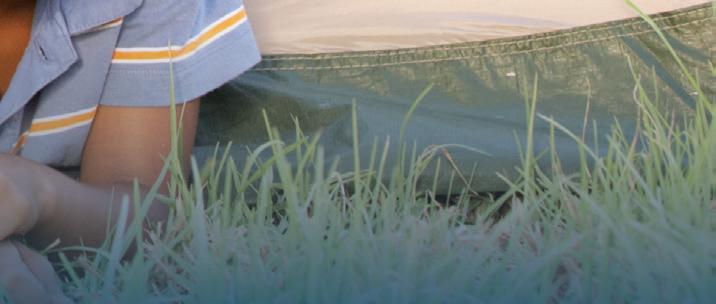
Donald Dean Ohsman, 78, of Scottsdale, passed away peacefully on Jan. 31, 2019, surrounded by his loving family, from complications of a rare blood cancer — Multiple Myeloma.
Don was born on March 22, 1940 and raised in Great Neck, New York. He was married to Rene (née) Segal until her death in 2008. Don is survived by his wife, Georgann Teeman Ohsman; her mother, Luba Teeman; his children, Marni Battista, Scott Ohsman and Lisa Kline; as well as five cherished granddaughters, Kloey, Rayna, Willow, Avery and Anabel. The girls lovingly called Don “Zayde.”
As founder and CEO of Hidenet.com, his opinions and market predictions for hide markets were valued and followed on every continent for over 50 years.

Don will always be remembered for being interested in everyone he met; an epic storyteller and listener, and a loving, generous man.
Services to honor Don were held at Mt. Sinai Cemetery in Phoenix on Feb. 4, 2019. In lieu of flowers, donations can be sent to the Jeffrey Modell Foundation, 780 Third Ave., New York, NY 10017, or online at www.info4pi.org/donate.
Frederick C. Thomas THOMAS LAW, PLLC 11811 Tatum Blvd., Ste. 4020 Phoenix, AZ 85028
Attorney for Petitioner Susan Bowen
SUPERIOR COURT MARICOPA COUNTY, ARIZONA No.: PB2018-004162
NOTICE OF HEARING REGARDING SPE-
CIAL CONSERVATORSHIP
Assigned to: Hon. Thomas Marquoit IN THE MATTER OF: PARIS BOWEN, a minor
NOTICE IS GIVEN that the Petitioner has filed with the Court a Petition for the approval of a special conservator and petition for ratification and approval of a settlement of a claim for a minor.
COURT HEARING. The Court has set a nonappearance hearing to consider the Petition a matter in the court papers as follows:
Date and Time: 27 February 2019 at 11 A.M.

Place: 101 West Jefferson Courtroom 512, Phoenix Arizona
Judicial Officer: Hon. Thomas Marquoit
RESPONSE TO PETITION. You are not required to respond to this Petition, but if you choose to respond, you may do so by filing a written response or by appearing in person at the hearing. If you choose to file a written response:
• File the original with the Court;
• Provide a copy to the office of the Judicial Officer named above; and
• Mail a copy to all interested parties at least five (5) business days before the hearing.
If you object to any part of the Petition or Motion that accompanies this notice, you must file with the court a written objection describing the legal basis for your objection at least three (3) days before the hearing date or you must appear in person or through an attorney at the time and place set forth in the notice of hearing. There is a FEE for filing a response. If you cannot afford the fee, you may file a Fee Deferral Application to request a payment plan from the Court. Respectfully submitted this 22nd day of January 2019.
THOMAS LAW, PLLC by Frederick C. Thomas, Esq., Attorney for Petitioner. Jewish News 2/1, 2/8, 2/15
KESSLER LAW GROUP
Eric W. Kessler
Ryan E. Kessler
Eric Bryce Kessler 6720 N. Scottsdale Rd., Suite 210 Scottsdale, AZ 85253
Attorneys for Plaintiff
IN THE SUPERIOR COURT OF THE STATE OF ARIZONA IN AND FOR THE COUNTY OF MARICOPA No. CV 2018-050683
SUMMONS
PTL PARTNERS, LLC, a limited liability company, Plaintiff, vs. SALVATORE GATTO PARTNERS, L.P., an Arizona limited liability partnership; OSCAR J. TARANGO and JANE DOE TARANGO, his wife; GEBA FINANCIAL, LLC, an Arizona limited liability company; CITY OF PHOENIX, a body politic; ROYCE T. FLORA, Maricopa County Treasurer; JOHN DOE and JANE DOE; ABC CORPORATION; ALL UNKNOWN HEIRS OF ABOVE, Defendants. IN THE NAME OF THE STATE OF ARIZONA:
TO: All Defendants named above: GREETINGS; YOU ARE HEREBY SUMMONED and required to appear and defend in the above-entitled action brought against you by the above-named Plaintiff, in the County of Maricopa, State of Arizona, and answer to the Complaint filed in said Court at 222 E. Javelina, Mesa, AZ 85210, within twenty (20) days if served personally within the State of Arizona, or thirty (30) days after completion of service outside of Arizona or by publication. You are notified that in case you fail to appear, Judgment by default will be rendered against you for the relief demanded in the complaint. Plaintiff’s attorney is: Eric W. Kessler, 6720 N. Scottsdale Rd., Suite 210, Scottsdale, AZ 85253. (480) 644-0093.
Requests for reasonable accommodation for persons with disabilities must be made to the court by parties at least three (3) working days in advance of a scheduled court proceeding.
Requests for an interpreter for persons with limited English proficiency must be made to the office of the judge or commissioner assigned to the case by parties at least ten (10) judicial days in advance of a scheduled court proceeding.
GIVEN UNDER MY HAND THIS DATE: DEC 19, 2018 /s/ Chris DeRose, Clerk. Jewish News 2/1, 2/8, 2/15, 2/22.
Mark Goldman (012156)
Brian Soleymani (032164) GOLDMAN & ZWILLINGER PLLC
17851 North 85th Street, Suite 175 Scottsdale, AZ 85255 (480) 626-8483
Attorneys for Plaintiff
IN THE SUPERIOR COURT OF THE STATE OF ARIZONA
IN AND FOR THE COUNTY OF MARICOPA
Case NO. CV 2019-052431
SUMMONS
GOLDMAN & ZWILLINGER PLLC, an Arizona professional limited liability company, Plaintiff, v. KRISTINE M. WILDER an individual, and YURI DOWNING an individual, Defendants.
THE STATE OF ARIZONA TO THE DEFEN-
DANT: YURI DOWNING, 1402 East Kleindale, Tucson, AZ 85719
YOU ARE HEREBY SUMMONED and required to appear and defend, within the time applicable, in this action in this Court. If served within Arizona, you shall appear and defend within 20 days after the service of the Summons and Complaint upon you, exclusive of the date of service. If served out of the State of Arizona – whether by direct service, by registered or certified mail, or by publication – you shall appear and defend within 30 days after the service of the Summons and Complaint upon you has been complete, exclusive of the date of service.
Where process is served upon the Arizona Director of Insurance as an insurer’s attorney to receive service of legal process against it in this state, the insurer shall not be required to appear, answer or plead until expiration of 40 days after date of such service upon the Director. Service by registered or certified mail within the State of Arizona is complete 30 days after the date of filing the receipt and affidavit of service with the Court. Service by publication is complete 30 days after the date of first publication. Direct service is complete when made. Service upon the Arizona Motor Vehicle Superintendent is complete 30 days after filing the Affidavit of Compliance and return receipt or Officer’s Return. RCP 4; A.R.S. §20-222, §28502, §28-503. YOU ARE HEREBY NOTIFIED that in the case of your failure to appear and defend within the time applicable, judgment by default may be rendered against you for the relief demanded in the Complaint.
YOU ARE CAUTIONED that in order to appear and defend, you must file an Answer or proper response in writing with the Clerk of this Court, accompanied by the necessary filing fee, within the time required, and you are required to serve a copy of any Answer or response upon the Plaintiffs’ attorney. RCP 10(d); A.R.S. §12331; RCP 5.
The name and address of Plaintiff’s attorney is:
Mark D. Goldman, Brian B. Soleymani, GOLDMAN & ZWILLINGER PLLC, 17851 N. 85TH Street, Suite 175, Scottsdale, Arizona 85255, (480) 626-8483.
Requests for reasonable accommodation for persons with disabilities must be made to the division assigned to the case by the party needing accommodation or his/her counsel at least three (3) judicial days in advance of a scheduled proceeding.
Requests for an interpreter for persons with limited English proficiency must be made to the division assigned to the case by the party needing the interpreter and/or translator or his/ her counsel at least ten (10) judicial days in advance of a scheduled court proceeding.
SIGNED AND SEALED this date: JAN 10, 2019
Clerk of the Superior Court, K. Kee, Deputy Clerk.
Mark Goldman (012156) Brian Soleymani (032164) GOLDMAN & ZWILLINGER PLLC 17851 North 85th Street, Suite 175 Scottsdale, AZ 85255 480) 626-8483
Attorneys for Plaintiff IN THE SUPERIOR COURT OF THE STATE OF ARIZONA IN AND FOR THE COUNTY OF MARICOPA
Case NO. CV 2019-052431
COMPLAINT
GOLDMAN & ZWILLINGER PLLC, an Arizona professional limited liability company, Plaintiff, v. KRISTINE M. WILDER an individual, and YURI DOWNING an individual, Defendants.
Plaintiff Goldman & Zwillinger PLLC, by and through the undersigned counsel, submits its Complaint stating its causes of action against Defendants Kristine M. Wilder and Yuri Downing.
1. Plaintiff Goldman & Zwillinger PLLC (“Plaintiff”) is an Arizona organized limited liability partnership and operates as a law firm in Scottsdale, Arizona, in Maricopa County.
2. Defendant Kristine M. Wilder (“Wilder”) is an individual and resident of Maricopa County, Arizona.
3. Defendant Yuri Downing (“Downing”) is an individual and resident of Maricopa County, Arizona.
4. In all acts and matters relevant to this Complaint, Wilder and Downing (collectively “Defendants”) acted in concert, acted individually on behalf of each other and acted jointly with one or more of the others, but in all events, for the benefit or on behalf of each other and all of them.
5. Plaintiff refers to “Defendants” when one or more of the several defendants acted on behalf of all defendants.
6. The superior court has jurisdiction over the claims raised in the Complaint since the amount in controversy exceeds the minimum jurisdiction of the superior court, as provided in Article 6, Section 14 of the Arizona Constitution and Section 12-123 of Arizona Revised Statutes
(“ARS”).
7. The contract and the acts and omissions giving rise to this Complaint were entered into and/ or performed in Maricopa County, Arizona.
8. The Contract was formed and performed in Maricopa County, Arizona, so venue is proper in this Court pursuant to ARS §12-401.
GENERAL FACTUAL ALLEGATIONS
9. Plaintiff is a law firm that provides legal services.
10. On July 27, 2017, Plaintiff and Defendants entered into a written contract by which Plaintiff provided legal services billed at agreed hourly rates, plus billing for costs and disbursements, and including other provisions (“Contract”).
11. Pursuant to the Contract and as a third-party payor, Downing agreed to pay Plaintiff all attorney’s fees, costs and expenses on time.
12. Pursuant to the Contract, Wilder agreed to pay Plaintiff attorney’s fees, costs and expenses on time.
13. Pursuant to the Contract and at Defendants’ request, Plaintiff represented Defendants in various matters (the “Matters”).
14. Downing paid Plaintiff for some but not all legal services.
15. Subsequently, Wilder agreed to continue paying attorney’s fees, costs and expenses..
16. Plaintiff last provided services for Defendants on the Matters and/or pursuant to the Contract on or about September 25, 2018.
17. Plaintiff billed Defendants regularly, which included a description of work performed, amount of time for each task described, the amount of fees incurred for each task, an itemization of the costs and disbursements incurred and/or advanced on behalf of Defendants, listing and crediting of the balance for payments by Defendants or other credits since the prior billing statement and showing the ending balance, with the ending balance being the amount due from Defendants (“Billing Statement”).
18. Each Billing Statement was a demand from Plaintiff for payment to Plaintiff by Defendants.
19. The remaining unpaid principal balance owed by Defendants to Plaintiff after all credits is $234,295.09.
20. The amount $234,295.09 was due on or before, October 17, 2018.
21. Plaintiff demanded payment of the amount owed by Defendants.
22. Defendants failed and refused to pay the amount owed to Plaintiff
23. The amount owed by Defendants to Plaintiff is past due.
COUNT ONE
Breach of Contract
24. Plaintiff incorporates by reference as if fully restated here all allegations in this Complaint required to state its cause of action in this count.
25. Pursuant to the Contract, Plaintiff agreed to perform legal services for Defendants.
26. Plaintiff performed as agreed pursuant to the Contract.
27. Pursuant to the Contract, Defendants agreed to pay the amounts owed as reflected on the billing statements produced by Plaintiff and delivered to Defendants.
28. Plaintiff produced and presented its billing statements to Defendants.
29. The Contract terms are certain and fair.
30. The Contract provides that at the conclusion of the Matters, all unpaid charges shall become immediately due, including costs and expenses of withdrawal of representation.
31. Payment of the final balance owed by Defendants is past due.
32. Defendants failed to pay Plaintiff as demanded.
33. By failing to pay, Defendants breached the Contract.
34. Defendants failed and refused to pay without justification or excuse the sums due to Plaintiff pursuant to the Contract despite enjoying the benefits of the services.
35. Plaintiff incurred attorney fees and costs as a result of Defendants’ breach, and pursuant to the Agreement is entitled to recover its attorney fees and costs.
36. The Contract provides that Defendants pay any and all costs and expenses, including but not limited to, reasonable attorney fees in connection with enforcement of Defendants’ obligations imposed by the Contract.
COUNT TWO
Unjust Enrichment
37. Plaintiff incorporates by reference as if fully restated here all allegations in this Complaint required to state its cause of action in this count.
38. Plaintiff provided Defendants with legal services and paid costs and expenses for the benefit of Defendants.
39. Defendants failed to pay Plaintiff for the services rendered and failed to reimburse Plaintiff for the costs and expenses.
40. Defendants were unjustly enriched by failing to pay Plaintiff.
41. Defendants’ failure to pay left Plaintiff without compensation for its services and without reimbursement of its costs and expenses in-
curred on behalf of Defendants, resulting in a legally defined impoverishment of Plaintiff.
42. Defendants’ unjust enrichment directly caused and resulted in Plaintiff’s legally defined impoverishment.
43. No justification exists for the enrichment of Defendants or the legally defined impoverishment of Plaintiff.
44. As an alternative claim to other counts of this Complaint, no remedy is otherwise provided by law.
COUNT THREE
Claim Upon Open Account/ Account Stated
45. Plaintiff incorporates by reference as if fully restated here all allegations in this Complaint required to state its cause of action in this count.
46. Plaintiff performed legal services for the benefit of Defendants and at the request of Defendants.
47. Plaintiff incurred costs and advanced costs for the benefit of Defendants.
48. Defendants requested and knew of the services provided by Plaintiff and Defendants accepted those services.
49. Defendants requested and/or knew of and approved the costs and advances incurred or paid by Plaintiff on behalf of Defendants.
50. Defendants accepted the services and accepted the advancement and payment of costs by Plaintiff.
51. Plaintiff billed Defendants for the services, cost and advances.
52. Defendants received the billing from Plaintiff.
53. Defendants paid some of the billings from Plaintiff.
54. Defendants did not object to the services, costs or advances by Plaintiff.
55. Defendants did not object to the billing by Plaintiff to Defendants.
56. Defendants failed to pay the amount owed on the account.
57. In the alternative to other counts in this Complaint, the relationship between Plaintiff and Defendants constituted an account stated and/or an open account.
WHEREFORE , Plaintiff requests entry of judgment in its favor and against Defendants including:
A. For the sum of $234,295.09;
B. For post-judgment interest as allowed by law or contract;
C. For attorney fees and costs as permitted by the terms of the Agreement, pursuant to ARS §12-341.01 or as otherwise allowed by law; and
D. For such additional relief consistent with these requests deemed just in these circumstances.
RESPECTFULLY SUBMITTED this 10th day of January, 2019.
GOLDMAN & ZWILLINGER PLLC
Mark D. Goldman
Brian B. Soleymani 17851 North 85th Street, Suite 175 Scottsdale, AZ 85255-6567
Telephone: (480) 626-8483
Telefacsimile: (480) 502-7500
AllCourtmaterial: docket@gzlawoffice.com
No Court material: mgoldman@gzlawoffice. com
No Court material: bsoleymani@gzlawoffice. com
Attorneys for Plaintiff
ORIGINAL of the foregoing filed with the Clerk of Maricopa County Superior Court this 10th day of January, 2019. /s/ Nadya Panich
Mark Goldman (012156)
Brian Soleymani (032164)
GOLDMAN & ZWILLINGER PLLC
17851 North 85th Street, Suite 175 Scottsdale, AZ 85255 (480) 626-8483
Attorneys for Plaintiff
IN THE SUPERIOR COURT OF THE STATE OF ARIZONA IN AND FOR THE COUNTY OF MARICOPA
Case NO. CV 2019-052431
CERTIFICATE OF COMPULSORY ARBITRATION
GOLDMAN & ZWILLINGER PLLC, an Arizona professional limited liability company, Plaintiff, v. KRISTINE M. WILDER, an individual, and YURI
DOWNING, an individual, Defendants.
Pursuant to Ariz. R. Civ. P. 72(e)(1), the undersigned certifies that he knows the dollar limits and any other limitations set forth by the local rules of practice for the applicable superior court, and further certifies that this case IS NOT subject to compulsory arbitration, as provided by the Ariz. R. Civ. P. Rules 72 through 76. RESPECTFULLY SUBMITTED this 10th day of January, 2019.
GOLDMAN & ZWILLINGER PLLC
Mark D. Goldman
Brian B. Soleymani 17851 North 85th Street, Suite 175 Scottsdale, AZ 85255-6567
Telephone: (480) 626-8483
Telefacsimile: (480) 502-7500
All Court material: docket@gzlawoffice.com
No Court material: mgoldman@gzlawoffice. com
No Court material: bsoleymani@gzlawoffice. com
Attorneys for Plaintiff
ORIGINAL of the foregoing filed with the Clerk of Maricopa County Superior Court this 10th day of January, 2019. /s/ Nadya Pan-
ich
Mark Goldman (012156)
Brian Soleymani (032164)
GOLDMAN & ZWILLINGER PLLC
17851 North 85th Street, Suite 175 Scottsdale, AZ 85255 (480) 626-8483
Attorneys for Plaintiff IN THE SUPERIOR COURT OF THE STATE OF ARIZONA IN AND FOR THE COUNTY OF MARICOPA
Case NO. CV 2019-052431
DEMAND FOR JURY TRIAL GOLDMAN & ZWILLINGER PLLC, an Arizona professional limited liability company, Plaintiff, v. KRISTINE M. WILDER, an individual, and YURI
DOWNING, an individual, Defendants. Pursuant to Rule 38(b), Ariz.R.Civ.P., Plaintiff Goldman & Zwillinger PLLC, by and through undersigned counsel, hereby requests a trial by jury in this matter.
RESPECTFULLY SUBMITTED this 10th day of January, 2019. GOLDMAN & ZWILLINGER PLLC Mark D. Goldman Brian B. Soleymani 17851 North 85th Street, Suite 175 Scottsdale, AZ 85255-6567 Telephone: (480) 626-8483 Telefacsimile: (480) 502-7500 All Court material: docket@gzlawoffice.com No Court material: mgoldman@gzlawoffice. com No Court material: bsoleymani@gzlawoffice. com
Attorneys for Plaintiff
ORIGINAL of the foregoing filed with the Clerk of Maricopa County Superior Court this 10th day of January, 2019. /s/ Nadya Panich Jewish News 2/1, 2/8, 2/15, 2/22.
NOTICE OF INTENT TO PLACE FOR ADOPTION
Notice is given to JOHN DOE (UNKNOWN, UNKOWN) that you have been identified by Sifa Muhindo, the natural mother of, Sofia Muhindo, as a potential father of a child, born on February 14, 2017, in Phoenix, Arizona. You are informed of the following:
1. Sifa Muhindo, the natural mother, plans to place the child for adoption.
2. Under sections 8-106 and 8-107, Arizona Revised Statutes, you have the right to consent or withhold consent to the adoption.
3. Your written consent to the adoption is irrevocable once you give it.
4. If you withhold consent to the adoption, you must initiate paternity proceedings under title 25, chapter 6, article 1, Arizona Revised Statutes, and serve the mother within thirty days after completion of service of this notice.
5. You have the obligation to proceed to judgment in the paternity action.
6. You have the right to seek custody.
7. If you are established as the child’s father, you must begin to provide financial support for the child.
8. If you do not file a paternity action under title 25, chapter 6, article 1, Arizona Revised Statutes, and do not serve the mother within thirty days after completion of the service of this notice and pursue the action to judgment, you cannot bring or maintain any action to assert any interest in the child.
9. The Indian child welfare act may supersede the Arizona Revised Statutes Regarding adoption and paternity.
10. For the purposes of service of a paternity action under title 25, chapter 6, article 1, Arizona Revised Statutes, service may be made on the mother, c/o Tonya K. MacBeth, 702 E. Osborn Rd., Ste. 200, Phoenix, AZ 85014 (602) 234-9926.
11. You may wish to consult with an attorney to assist you in responding to this notice. Jewish News 2/8, 2/15, 2/22, 3/1.
NOTICE OF INTENT TO PLACE FOR ADOPTION
Notice is given to JOHN DOE AND DANIEL MATTHEW DeHERRERA that you have been identified by Angela Elvera Vialpando, a/k/a Angela Elvera DeHerrera, née Lavorata, the natural mother of, Analisa Danielle DeHerrera, f/k/a Analisa Danielle Lavorata, as a potential father of a child, born on July 16, 2001, in Mesa, Arizona.
You are informed of the following:
1. Angela Elvera Vialpando, née Lavorata, the natural mother, plans to place the child for adoption.
2. Under sections 8-106 and 8-107, Arizona Revised Statutes, you have the right to consent or withhold consent to the adoption.
3. Your written consent to the adoption is irrevocable once you give it.
4. If you withhold consent to the adoption, you
must initiate paternity proceedings under title 25, chapter 6, article 1, Arizona Revised Statutes, and serve the mother within thirty days after completion of service of this notice.
5. You have the obligation to proceed to judgment in the paternity action.
6. You have the right to seek custody.
7. If you are established as the child’s father, you must begin to provide financial support for the child.
8. If you do not file a paternity action under title 25, chapter 6, article 1, Arizona Revised Statutes, and do not serve the mother within thirty days after completion of the service of this notice and pursue the action to judgment, you cannot bring or maintain any action to assert any interest in the child.
9. The Indian child welfare act may supersede the Arizona Revised Statutes Regarding adoption and paternity.
10. For the purposes of service of a paternity action under title 25, chapter 6, article 1, Arizona Revised Statutes, service may be made on the mother at 1005 N. Sericin, Mesa, AZ 85205.
11. You may wish to consult with an attorney to assist you in responding to this notice. Jewish News 2/8, 2/15, 2/22, 3/1.



Make a charitable donation to Jewish News and help support Jewish community journalism.



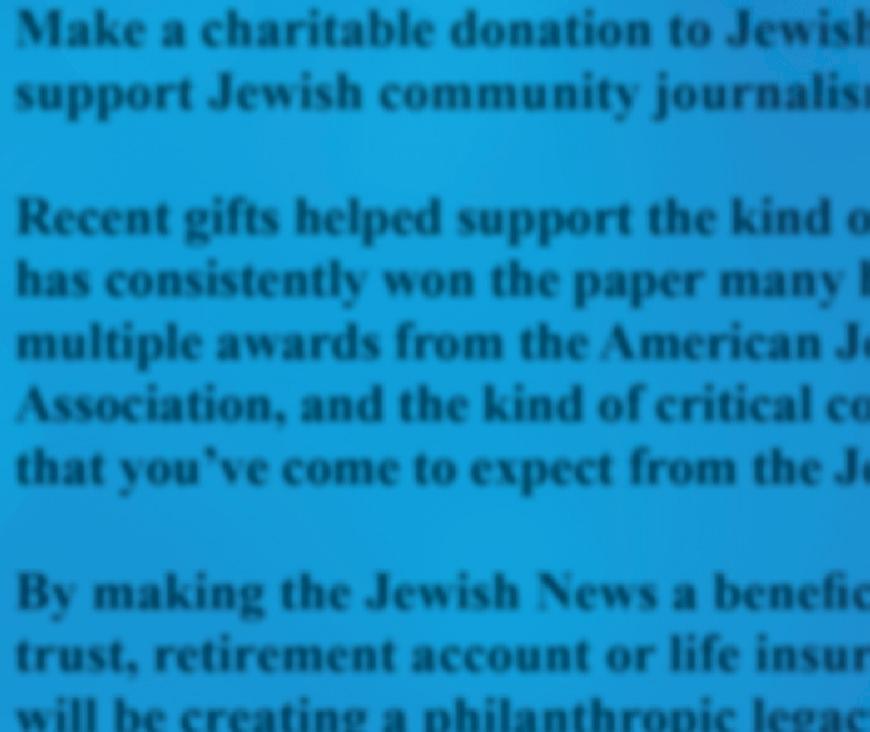



Recent gifts helped support the kind of reporting that has consistently won the paper many honors, including multiple awards from the American Jewish Press Association, and the kind of critical community coverage that you’ve come to expect from the Jewish News.
By making the Jewish News a beneficiary of your will, trust, retirement account or life insurance policy, you will be creating a philanthropic legacy that will help sustain the vibrant voice of Jewish Arizona. Whether you read us in print or online, please help us continue our commitment to bringing you the local Jewish news our community counts on.

Contributions to the Jewish News, a 501(c)(3) organization, are tax deductible. Seek independent professional legal advice before making any change to your plans. 12701 N. Scottsdale Road, Suite 206 Scottsdale, AZ 85254
organizations keep prisoners from being forgotten


Jewish
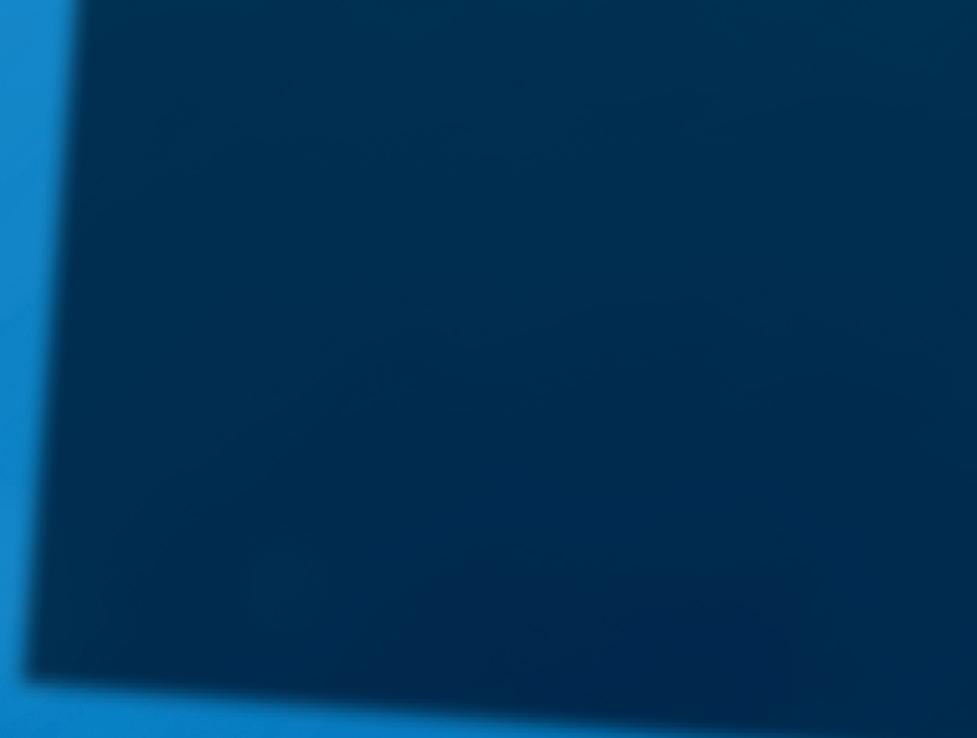


Donate NICK ENQUIST STAFF WRITER Although Jewish prisoners make up less than 1 percent of the prison population nationwide, Rabbi Menachem Katz continues to maintain contact with prisoners to help provide what they need, such as religious texts, prayer services, and to make sure that they are treated fairly. But his work is not easy. Jewish inmates in Arizona, for instance, have refused to meet with Katz, who works with Jewish prisoners all over the country, because of the fear of white nationalist gangs. “We wanted to come visit them, but they said, ‘No, that will be too dangerous for you,’” said Katz, the Aleph Institute’s director of Military and Prison Outreach in Florida. “In Arizona, there is a concern with white supremacy.” According to Katz, there are currently 40 Jewish prisoners in the Arizona state prisons and 20 in federal institutions. A 2016 ADL report listed California and Texas as having the highest concentration of white supremacist gangs, followed by “problem” states of Oklahoma, Indiana, Missouri, Oregon and Tennessee.
JANET PEREZ MANAGING EDITOR
Yeshiva School girls pray outside Tree of Life. PHOTOBYJIMBUSIS Election update Almost a week after Election Day, three-term U.S. Rep. Kyrsten Sinema has been declared the winner in the race to fill the seat of retiring U.S. Sen. Jeff Flake. She was in a tight race with Republican U.S. Rep. Martha McSally. Sinema is Arizona’s first woman U.S. senator. She is also the first Arizona Democrat to be elected to the upper chamber in 30 years. Two races with Republican Jewish candidates remain undecided. Visit jewishaz. com for election updates. PHOTO COURTESY OF THE KYRSTEN SINEMA CAMPAIGN SEE PRISONERS, PAGE 3 KEEP YOUR EYE ON jewishaz.com

SPECIAL SECTION | 17 FAMILY MATTERS Treating pediatric pain with opioids and helping children and teens navigate the pitfalls of social media Israel halts ceasefire talks Marvel’s Stan Lee dies Toronto: Jewish teens assaulted ISRAEL NATIONAL INTERNATIONAL NOVEMBER 16, 2018 | KISLEV 8, 5779 VOLUME 70, NUMBER 60 $1.50 HEADLINES | 6 MEMORIALPITTSBURGHEVENT Pittsburgh residents, celebrities and dignitaries gathered to honor Tree of Life victims SEE TRAUMA, PAGE 2
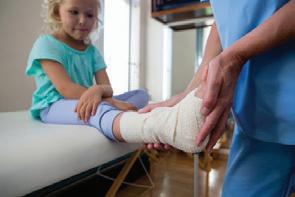
Please subscribe and continue to support JEWISH NEWS with a tax-deductible contribution. Complete the form below or go to jewishaz.com/subplus


Arizona’s problem is not as big, but still has an impact on prisoners and visitors. But that has not stopped the Aleph Institute from providing its services.